Current
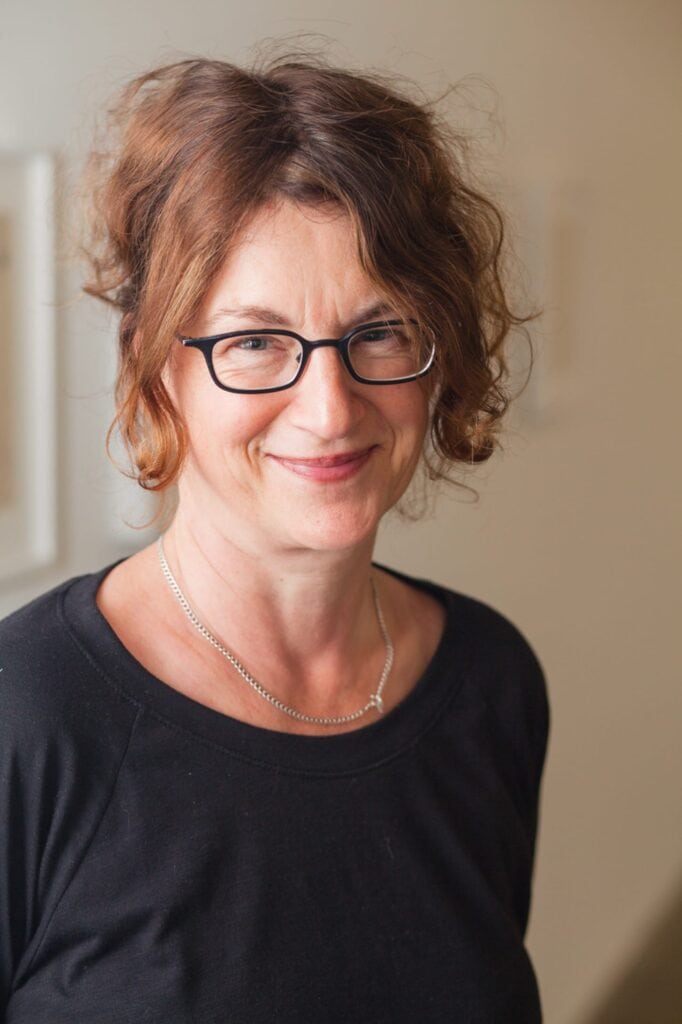
Susanne Vielmetter interviewed for Art Basel
December 13, 2025
Susanne Vielmetter interviewed by Jori Finkel in conjunction with Art Basel x Airbnb.
“When Susanne Vielmetter founded her eponymous gallery in Los Angeles 25 years ago, the local art market was a baby or toddler at best. The art schools were established but still gaining broader recognition, contemporary art museums were relatively yo...
Susanne Vielmetter interviewed by Jori Finkel in conjunction with Art Basel x Airbnb.
“When Susanne Vielmetter founded her eponymous gallery in Los Angeles 25 years ago, the local art market was a baby or toddler at best. The art schools were established but still gaining broader recognition, contemporary art museums were relatively young, and sales were, many thought, best left to New York. But she persisted in developing an exciting and wide-ranging program, giving artists such as Mickalene Thomas, Wangechi Mutu, Charles Gaines, Nicole Eisenman, Amy Sillman, Rodney McMillian, and Hayv Kahraman important early shows. She has done it all with vision, integrity, and intellectual flair – the German accent helps. Here, she talks about the ever-evolving LA arts community that she has helped to create.”
By Jori Finkel – 13 December 2025
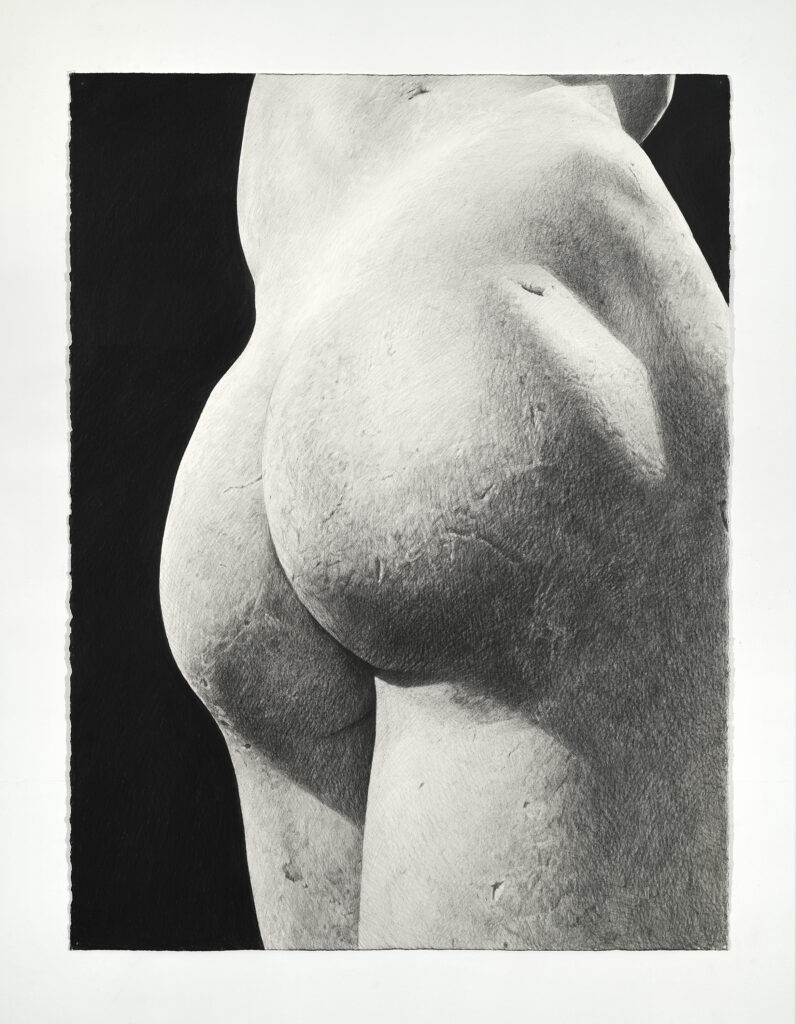
Karl Haendel in Art & Object
December 11, 2025
Karl Haendel featured in Art & Object’s Highlights from Art Basel Miami Beach 2025 by Paul Laster.
“Great Ass at The Met 1 is part of a series of drawings Haendel made after visiting New York’s Metropolitan Museum of Art. In search of the finest male asses from antiquity, he photographed the sculptural figures in the Met’s collection w...
Karl Haendel featured in Art & Object’s Highlights from Art Basel Miami Beach 2025 by Paul Laster.
“Great Ass at The Met 1 is part of a series of drawings Haendel made after visiting New York’s Metropolitan Museum of Art. In search of the finest male asses from antiquity, he photographed the sculptural figures in the Met’s collection with his iPhone. He then meticulously drew the iconic butts with pencil on paper in his Los Angeles studio – turning the project into not only an exquisite suite of drawings but also a limited-edition book.”
By Paul Laster – 11 December 2025
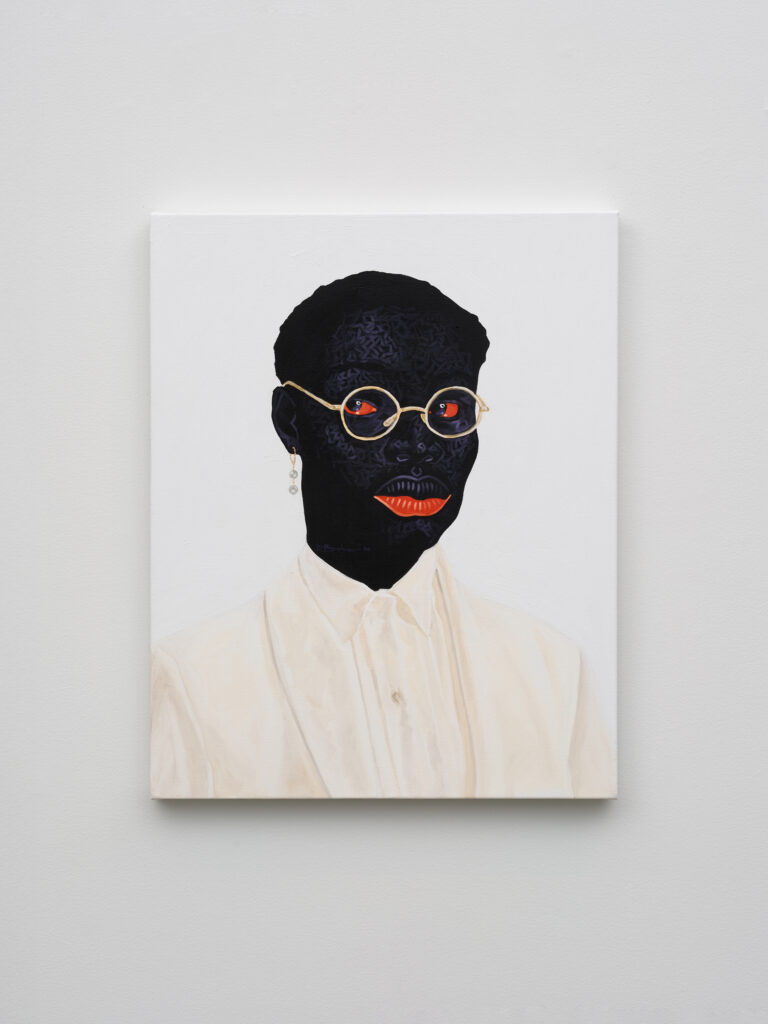
Kwesi Botchway in Metal Magazine
November 20, 2025
Kwesi Botchway is interviewed in Metal Magazine by Sofia Crespo about his practice and artist residency WorldFaze Art Practice.
“Botchway’s style pulls you in to look at the detail of the brushstrokes, the layers of colours and shades, and the meticulously chosen accessories. Each portrait is singular: each individual’s energy is analy...
Kwesi Botchway is interviewed in Metal Magazine by Sofia Crespo about his practice and artist residency WorldFaze Art Practice.
“Botchway’s style pulls you in to look at the detail of the brushstrokes, the layers of colours and shades, and the meticulously chosen accessories. Each portrait is singular: each individual’s energy is analysed and thoroughly understood. There is not just one person in these paintings but also the generations that came before them to inspire and build what we see on the canvas.”
By Sofia Crespo – 11 November 2025
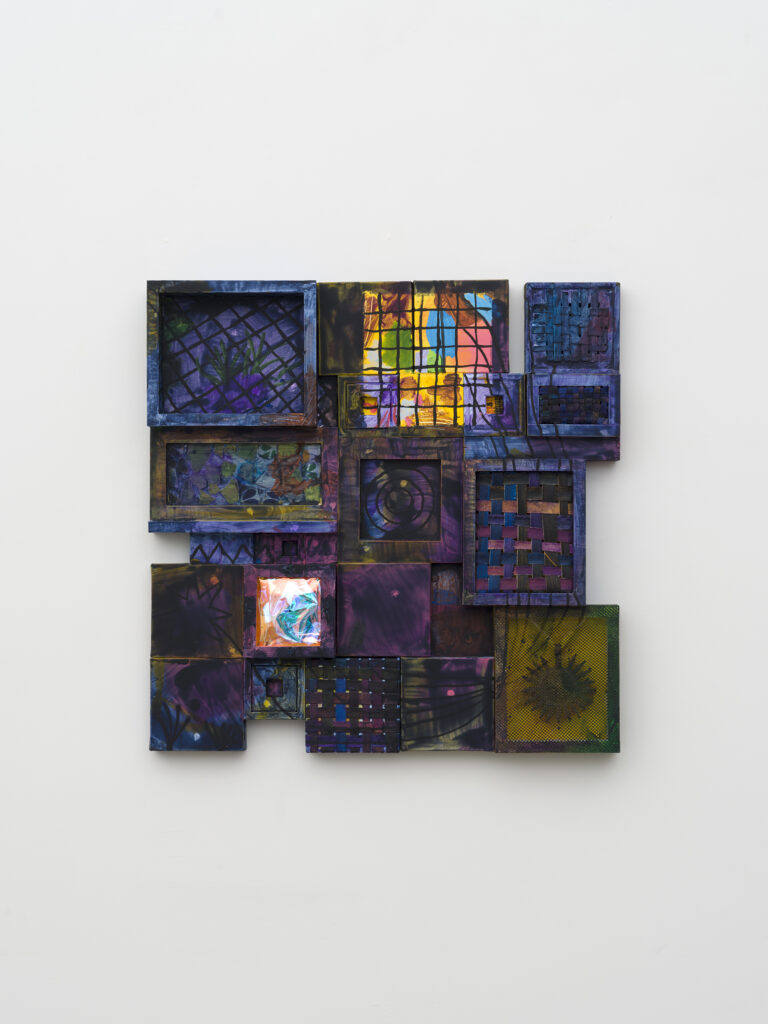
Tariku Shiferaw in BOMB
November 11, 2025
Tariku Shiferaw interviewed by Melissa Joseph in BOMB about his spotlight presentation currently on view until December 15th.
“Tariku Shiferaw’s works are contemporary palimpsests. He carefully builds layers on the surface of his panels, only to cover them with even more layers of translucent Payne’s grey. Though we’ll never make our w...
Tariku Shiferaw interviewed by Melissa Joseph in BOMB about his spotlight presentation currently on view until December 15th.
“Tariku Shiferaw’s works are contemporary palimpsests. He carefully builds layers on the surface of his panels, only to cover them with even more layers of translucent Payne’s grey. Though we’ll never make our way to the innermost spaces of his paintings and assemblages, he always hints at what lies beneath his night-sky veils, redaction bars, and chain-link fences. In his spotlight exhibition Defiant Imaginations at Vielmetter Los Angeles in his hometown of Los Angeles, Shiferaw introduces new language to his ongoing series.”
By Melissa Joseph – 10 November 2025
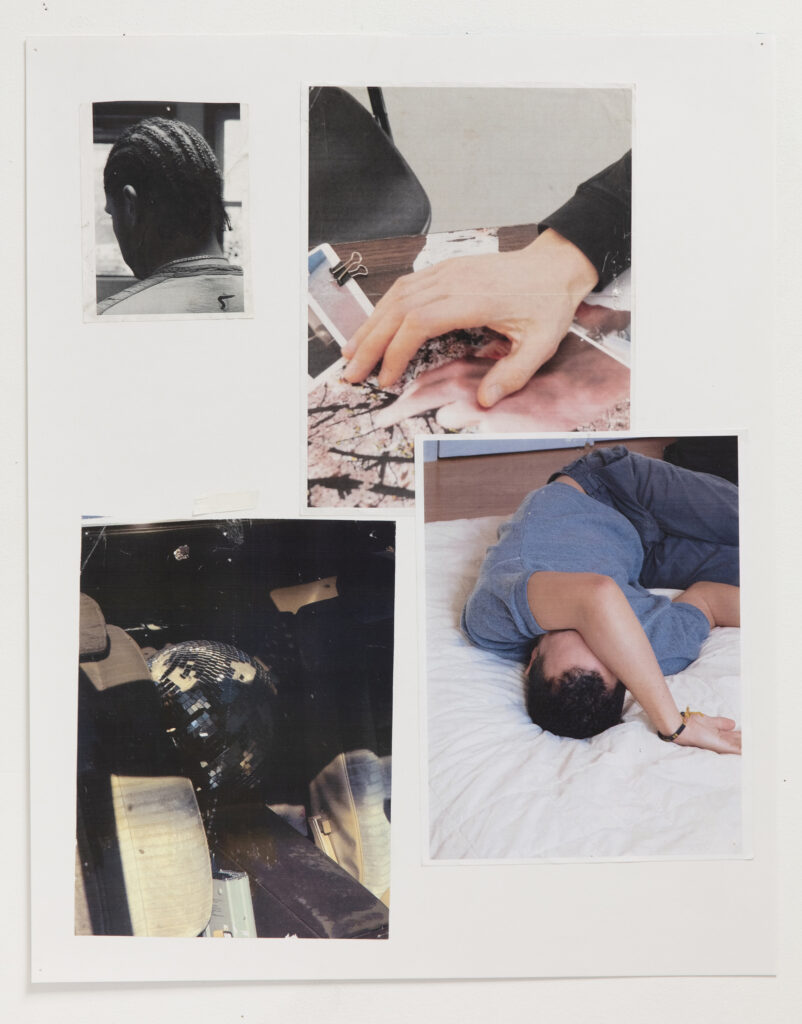
Paul Mpagi Sepuya in The LA Times
November 4, 2025
In “Excerpts & Fragments,” the new exhibition presented by Los Angeles Nomadic Division, artist Paul Mpagi Sepuya examines life’s fragments through the three modalities of his practice: zines, books and photographs. Through these documents, the viewer travels across Sepuya’s memory as he traverses New York and L.A. in search of his art...
In “Excerpts & Fragments,” the new exhibition presented by Los Angeles Nomadic Division, artist Paul Mpagi Sepuya examines life’s fragments through the three modalities of his practice: zines, books and photographs. Through these documents, the viewer travels across Sepuya’s memory as he traverses New York and L.A. in search of his artistic path and creative vision. Through this show, Sepuya offers a window into friendships, queer communities and personal growth.
By Katerina Portela – 31 October 2025
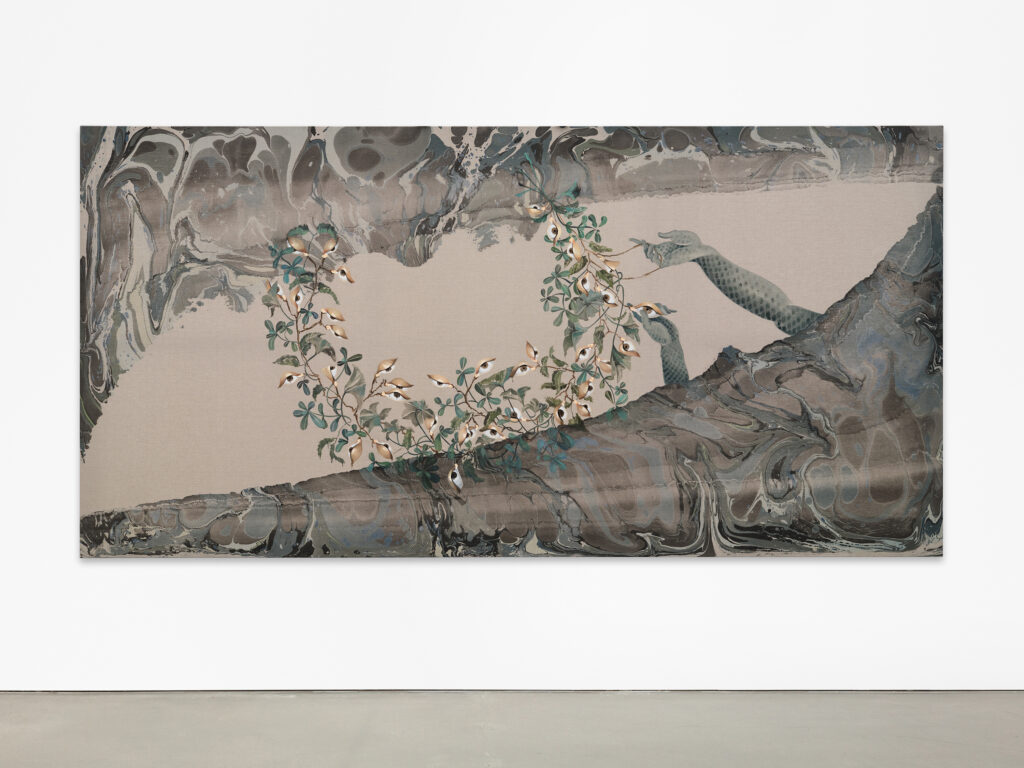
Hayv Kahraman in The Observer
October 9, 2025
Hayv Kahraman’s solo exhibition at Jack Shainman featured in The Observer.
“Luminous yet ominous, Hayv Kahraman’s work radiates an archetypal force, drawing on ancient symbolism to confront the contemporary condition and timeless existential questions about humanity’s place within the entropic cycle of the universe. Her work explores p...
Hayv Kahraman’s solo exhibition at Jack Shainman featured in The Observer.
“Luminous yet ominous, Hayv Kahraman’s work radiates an archetypal force, drawing on ancient symbolism to confront the contemporary condition and timeless existential questions about humanity’s place within the entropic cycle of the universe. Her work explores personal and collective stories of displacement, diasporic disorientation and cultural fracture, evoked through mysterious choreographies of feminine bodies drifting in suspended, liminal spaces—as if they are both inhabiting discomfort and, at the same time, finding within that fluidity a freer, more open space of possibility.”
By Elisa Carollo – 06 October 2025
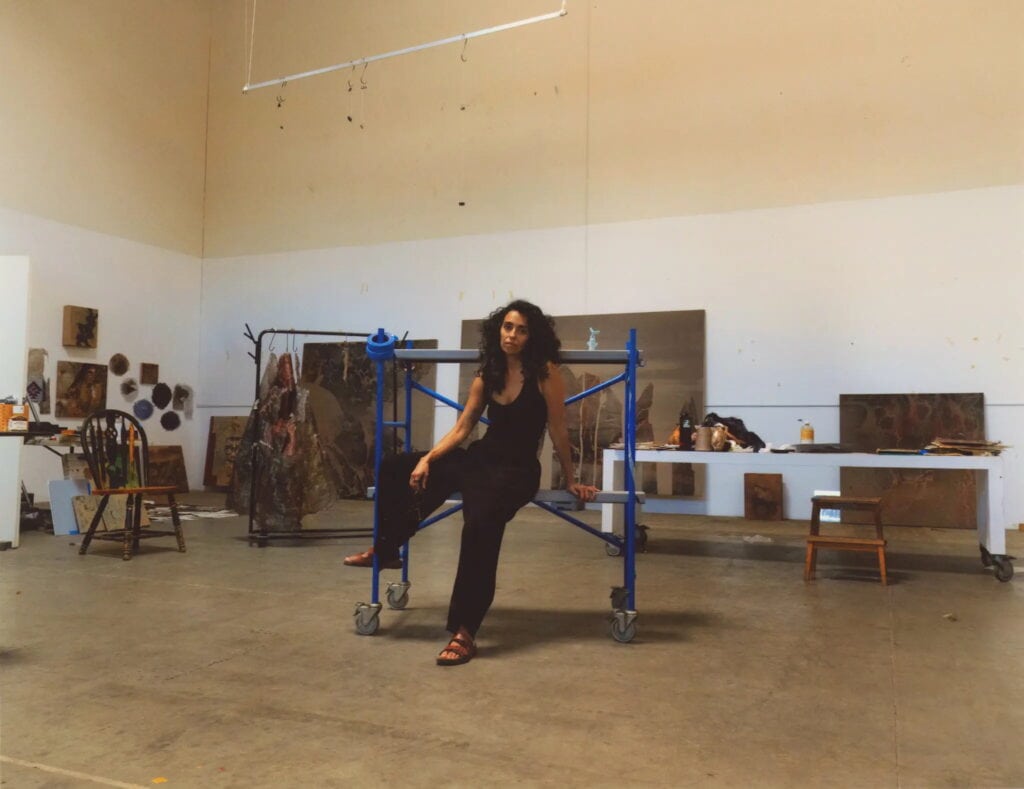
Hayv Kahraman in The New York Times
October 3, 2025
Hayv Kahraman’s solo exhibition at Jack Shainman is reviewed in the New York Times by critic Aruna D’Souza.
“The sheer elegance of Kahraman’s images belies her almost obsessive research process. Over the course of our interview, she discussed, with a great deal of fluency, botany, microbiology, malacology (the study of mollusks), psych...
Hayv Kahraman’s solo exhibition at Jack Shainman is reviewed in the New York Times by critic Aruna D’Souza.
“The sheer elegance of Kahraman’s images belies her almost obsessive research process. Over the course of our interview, she discussed, with a great deal of fluency, botany, microbiology, malacology (the study of mollusks), psychoanalysis, the theorist Donna Haraway, history and contemporary politics in West Asia, and more.
Frauke Josenhans, curator of The Foreign in Us, Kahraman’s 2024 survey at the Moody Center for the Arts at Rice University, Houston, said: “The way she uses those references is subtle but insistent. It’s not the first thing you see.
”The works in Ghost Fires were all created after the Los Angeles wildfires. A recurring image in her new paintings is a phoenix like bird from medieval Arab cosmology that rises from the ashes of a pyre. Some paintings, depicting women sweeping their hair on the ground conjuring rain clouds as they swirl dust into the air, refer to an ancient Sumerian ritual.” -Aruna D’Souza
The exhibition is on view through October 25th.
Kahraman will have a subsequent solo exhibition at Vielmetter Los Angeles in January of 2026.
By Aruna D’Souza – 03 October 2025
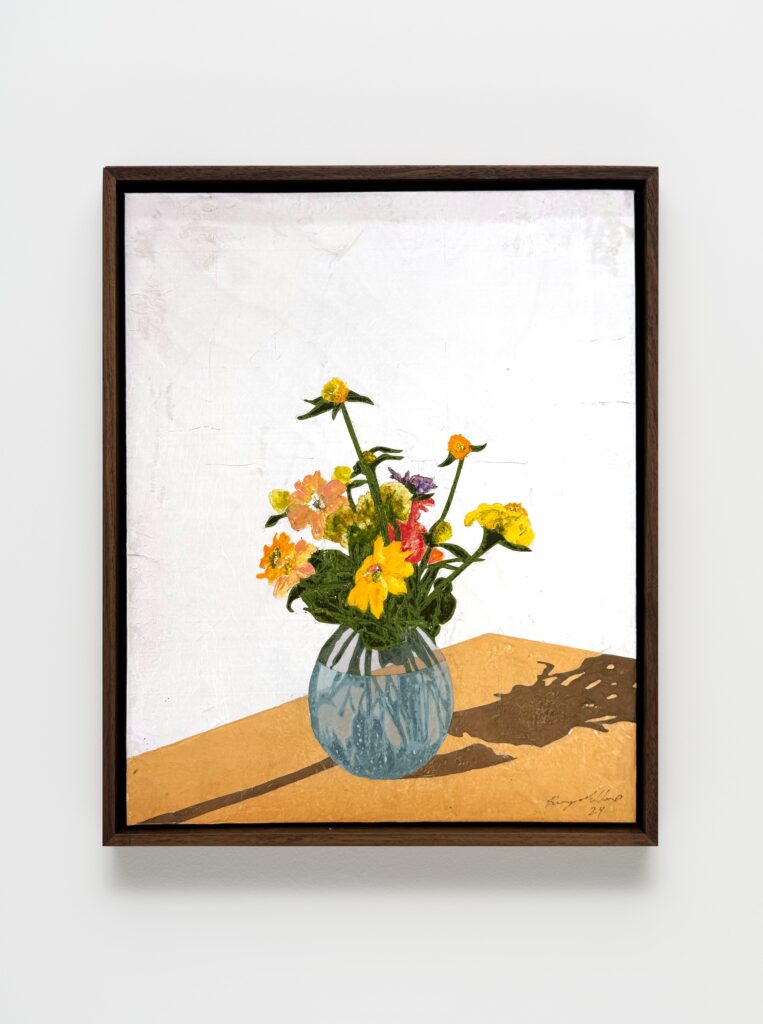
Hugo McCloud in The Wall Street Journal
September 17, 2025
Hugo McCloud profiled in The Wall Street Journal’s “Four Los Angeles Artists You Should Know”.
“Hugo McCloud is known for using industrial materials like plastic, tar and aluminum to create his intricate paintings including abstracts, figurative scenes and florals. In his own life, he tries to seek out nature wherever he can find it—su...
Hugo McCloud profiled in The Wall Street Journal’s “Four Los Angeles Artists You Should Know”.
“Hugo McCloud is known for using industrial materials like plastic, tar and aluminum to create his intricate paintings including abstracts, figurative scenes and florals. In his own life, he tries to seek out nature wherever he can find it—such as running on trails in L.A.’s Griffith and Echo parks. McCloud, the son of a landscape designer and floral designer, says the outdoors feeds his soul and work, including his latest series of flowers inspired in part by the 15th-to-17th-century frames he sourced for them”
By Kelly Crow – 10 September 2025
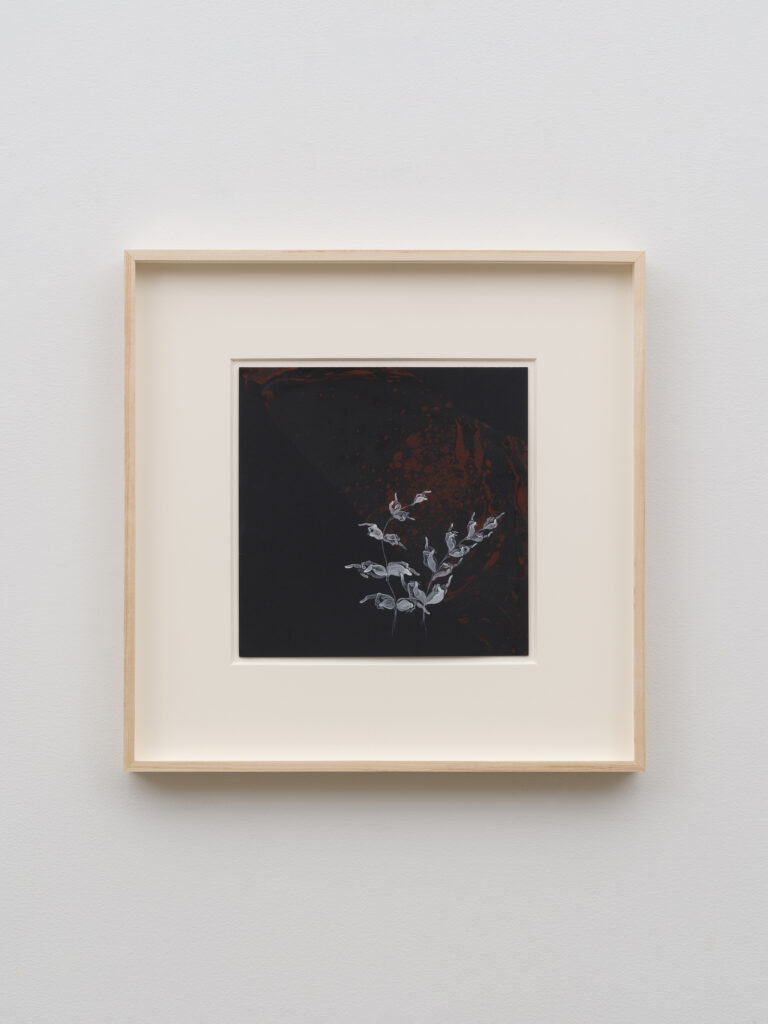
Hayv Kahraman in W Magazine
September 12, 2025
Hayv Kahraman’s solo exhibition Ghost Fires at Jack Shainman featured in W Magazine.
“Ghost Fires is Kahraman’s first body of work since Los Angeles’s devastating January wildfires, which displaced the artist and her family along with thousands of others. While the compositions radiate with anguish, they do not depict any literal fires...
Hayv Kahraman’s solo exhibition Ghost Fires at Jack Shainman featured in W Magazine.
“Ghost Fires is Kahraman’s first body of work since Los Angeles’s devastating January wildfires, which displaced the artist and her family along with thousands of others. While the compositions radiate with anguish, they do not depict any literal fires, but instead white plumes with a spectral translucency. Although fires themselves are ephemeral, “they haunt,” Kahraman explains, leaving behind a trail of ghosts. They linger in the form of smoke, or the sheen of toxins left on everything they touch—the remains of Kahraman’s Altadena home are coated in unlivable amounts of lead, other heavy metals, and arsenic. Ghosts can also store themselves as memories, or deeper in the subconscious, resurfacing at unexpected times.”
By Zanelle Zara – 10 September 2025
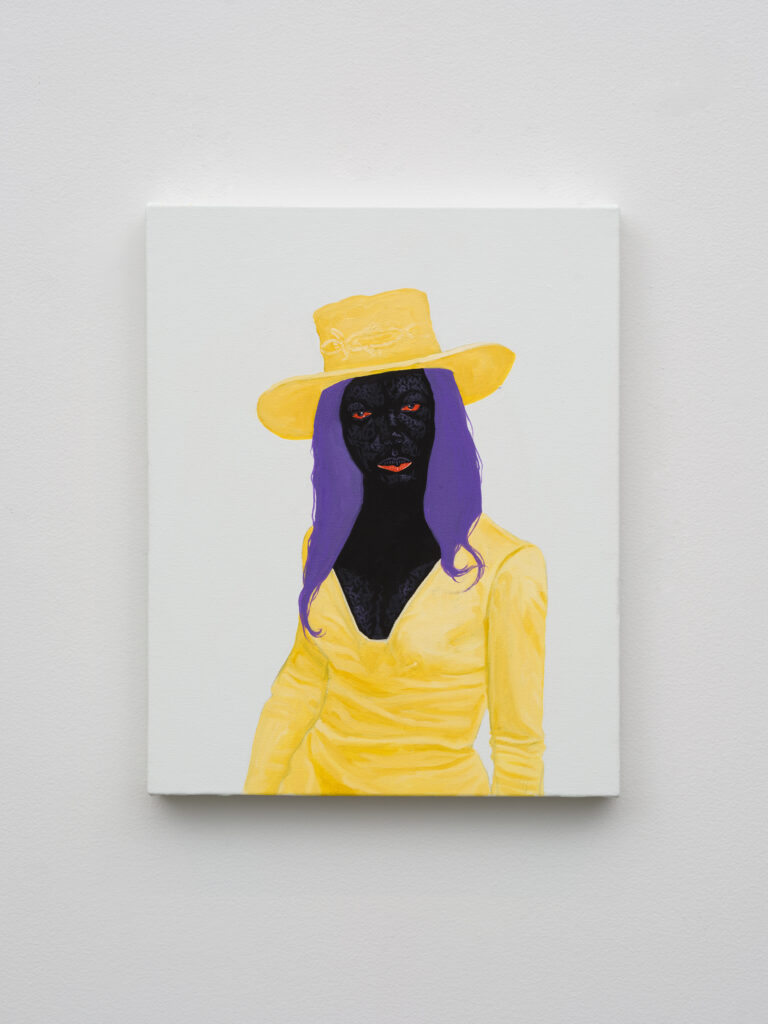
Kwesi Botchway in Galerie Magazine
September 6, 2025
Kwesi Botchway’s solo exhibition is featured in Galerie Magazine’s “8 Must-See Solo Gallery Shows in September” on view through September 13th.
“A Ghanaian painter with a mission to portray Blackness beyond the confines of mainstream narratives, Kwesi Botchway blends French Impressionism and African Realism to explore themes of becomin...
Kwesi Botchway’s solo exhibition is featured in Galerie Magazine’s “8 Must-See Solo Gallery Shows in September” on view through September 13th.
“A Ghanaian painter with a mission to portray Blackness beyond the confines of mainstream narratives, Kwesi Botchway blends French Impressionism and African Realism to explore themes of becoming and possibility. Using colors like emotions, the artist, based in Accra and Belgium, believes that colors are characters that express attitudes. Painted during a residency in Los Angeles this spring, the portraits in his “Be Your Own Cool” exhibition show his subjects in moments of reflection and stillness. Celebrating the evolution of contemporary Black life, his paintings highlight Black individuals and their unique choices in hairstyles, clothing, and personal style. Representing different aspects of the Black experience, his focus on the face captures the essence of his subjects’ souls.”
By Paul Laster – 05 September 2025
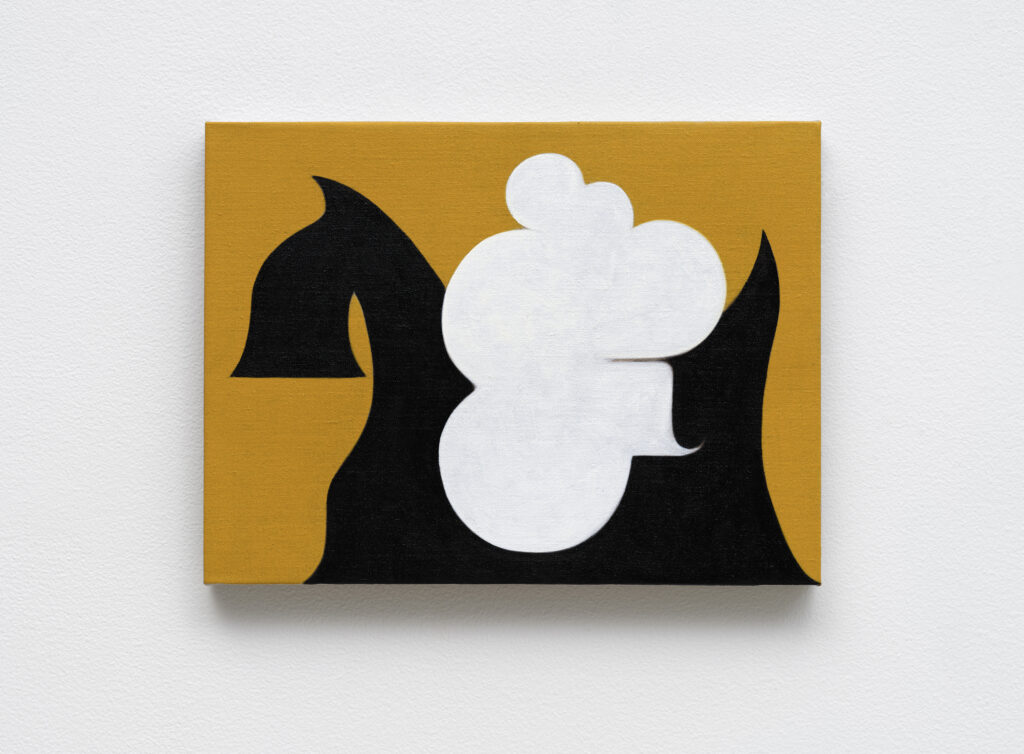
Math Bass in Galerie Magazine
August 1, 2025
Vielmetter Los Angeles’s presentation at the Aspen Art Fair featured in Galerie Magazine’s highlights of the fair.
“Over the past decade, Math Bass has created a series of paintings, sculptures, drawings, and installations called Newz!. An ongoing exploration of semiotics and visual perception, the series features a recurring set of sy...
Vielmetter Los Angeles’s presentation at the Aspen Art Fair featured in Galerie Magazine’s highlights of the fair.
“Over the past decade, Math Bass has created a series of paintings, sculptures, drawings, and installations called Newz!. An ongoing exploration of semiotics and visual perception, the series features a recurring set of symbols and a constantly evolving visual language where tensions grow between language and meaning. Using vivid shapes and highly stylized images, the series ranges from instantly recognizable to charmingly abstract and ambiguous. In Vielmetter’s group show of abstract paintings and sculptures at the fair, the Los Angeles artist displays four playful canvases, including Scottie Cloud (yellow), which suggest representational subjects through abstraction, along with a sculpture of an apple linked to a title that amusingly appears abstract.”
By Paul Laster – 01 August 2025
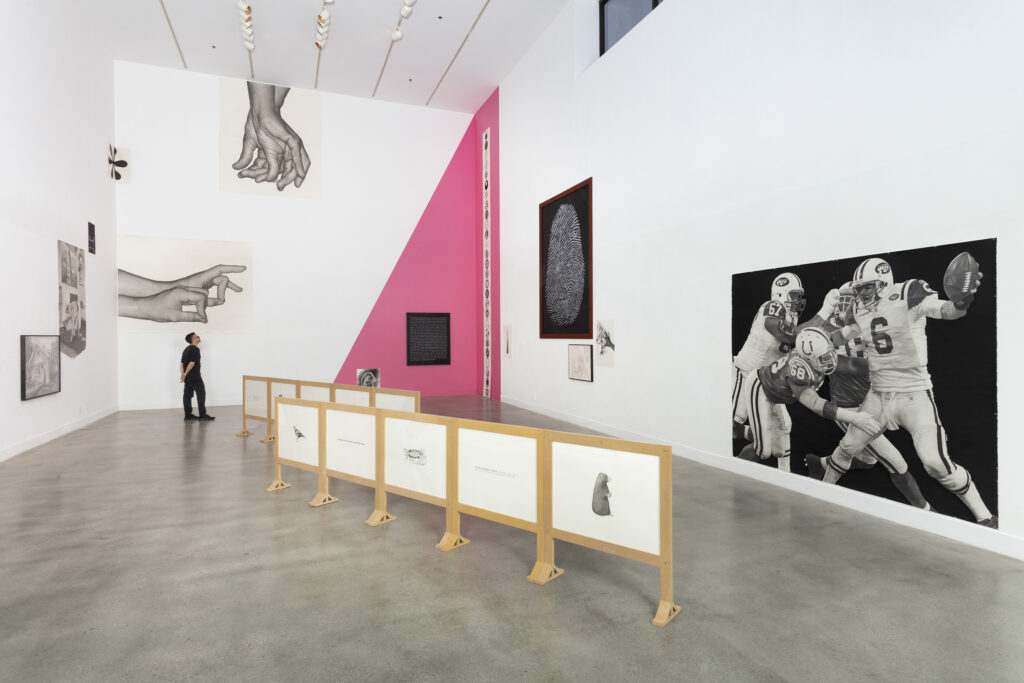
Karl Haendel in Ocula
July 18, 2025
Karl Haendel interviewed by Jonathan Griffin about Less Bad at the Frederick R. Weisman Museum at Pepperdine featured in Ocula.
“Often my favourite art is installation or performance, work that prioritises the physical over the optical. Using the entire space forces the viewer to engage their entire body, not just their eyes, and I thi...
Karl Haendel interviewed by Jonathan Griffin about Less Bad at the Frederick R. Weisman Museum at Pepperdine featured in Ocula.
“Often my favourite art is installation or performance, work that prioritises the physical over the optical. Using the entire space forces the viewer to engage their entire body, not just their eyes, and I think this helps awaken the mind. More of your synapses are firing. And I hope it makes for a less interchangeable experience.
…I try to make something particular—a unique experience for the viewer. And installing like this is playful, joyful. So I’ll make some clever visual moves, like an exclamation point that’s tipped over in the corner. It makes me smile. I hope it makes others smile.”
By Jonathan Griffin – 17 July 2025
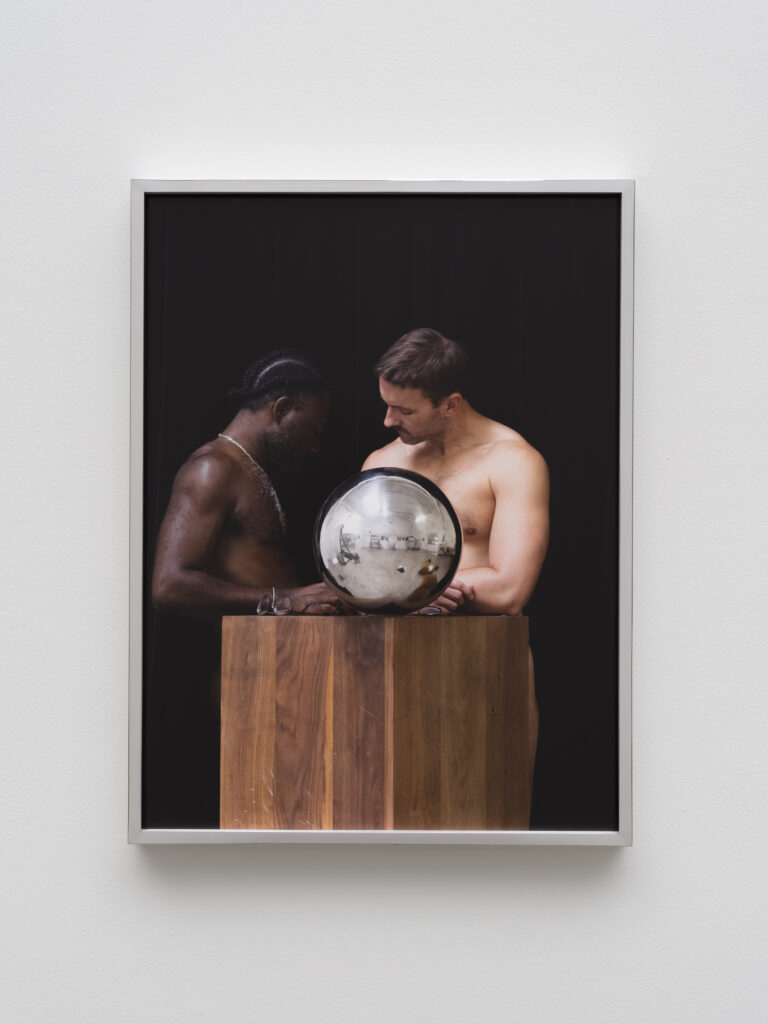
Paul Mpagi Sepuya in Artillery Magazine
July 17, 2025
Paul Mpagi Sepuya’s exhibition POSITIONER with Vielmetter Los Angeles featured in Artillery Magazine!
“The title “positioner” refers to the photographer’s inclusion of himself in several of these photos as he positions his models, most of which are queer men and women. These are a reflection on studio portraiture as a specific social c...
Paul Mpagi Sepuya’s exhibition POSITIONER with Vielmetter Los Angeles featured in Artillery Magazine!
“The title “positioner” refers to the photographer’s inclusion of himself in several of these photos as he positions his models, most of which are queer men and women. These are a reflection on studio portraiture as a specific social context. They explore the relationship of photographer to model, not just on an interpersonal level, but as it reverberates within the context of the studio and the artist’s practice. The content is not intimacy, per se, but the care, communication, and technique that go into capturing it. These are continually rewarding on conceptual, formal, and psychological levels, which reveal how all of the above are also intertwined.”
By Elwyn Palmerton – 01 July 2025
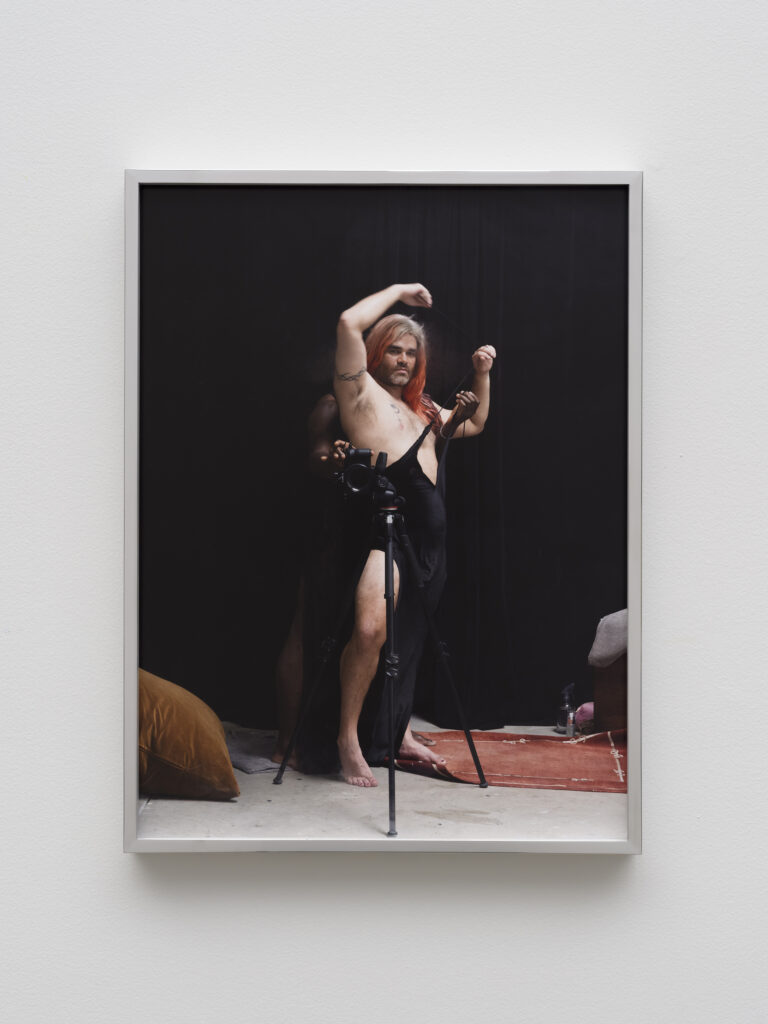
Paul Mpagi Sepuya in Musée Magazine
June 20, 2025
Paul Mpagi Sepuya POSITIONER is reviewed in Musée Magazine by Bryce Ray. The exhibition is on view through July 19th.
“Sepuya’s use of the steel gazing ball, one such artifact, democratizes the photographic process, placing both Sepuya and his object on an equal footing within the frame of the camera. Rather than positioning himself as...
Paul Mpagi Sepuya POSITIONER is reviewed in Musée Magazine by Bryce Ray. The exhibition is on view through July 19th.
“Sepuya’s use of the steel gazing ball, one such artifact, democratizes the photographic process, placing both Sepuya and his object on an equal footing within the frame of the camera. Rather than positioning himself as a controlling force outside the frame of the image, Sepuya becomes another subject. “
By Bryce Ray – 16 June 2025
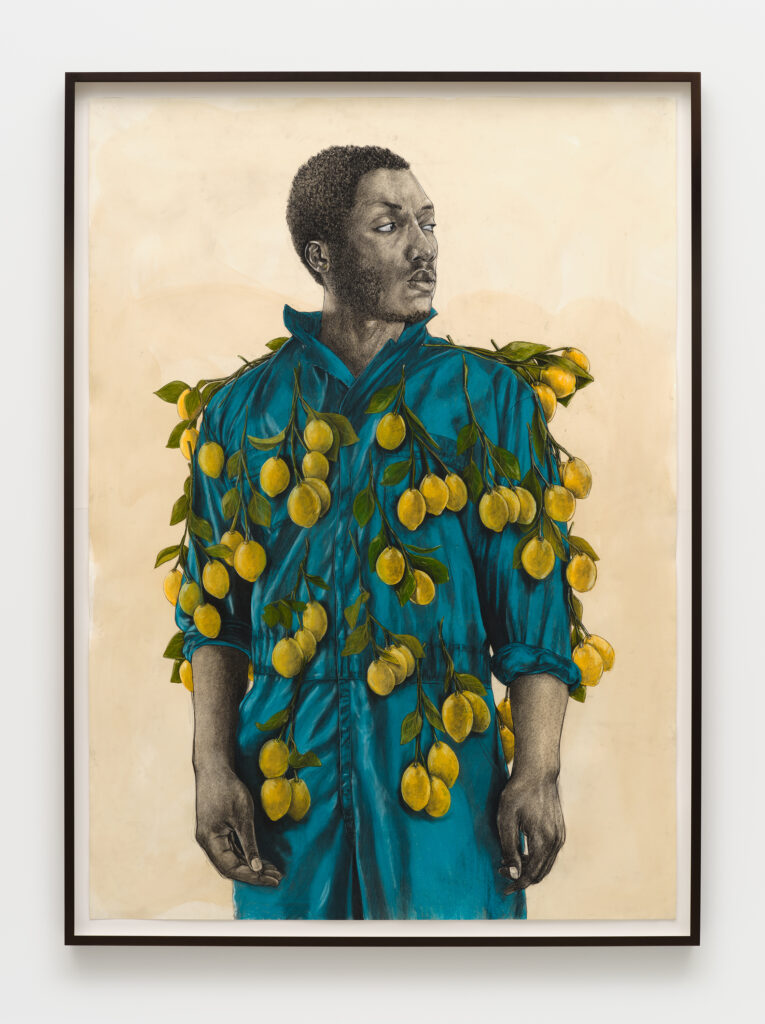
Robert Pruitt in Colossal
June 7, 2025
Robert Pruitt’s work is featured in Colossal Magazine. Pruitt will have a solo show opening this September at Vielmetter Los Angeles.
“Adornment is prominent in Pruitt’s works and serves a dual purpose: it provides a means to excavate questions about identity, culture, place, and time and also offers a chance to find something “fun and...
Robert Pruitt’s work is featured in Colossal Magazine. Pruitt will have a solo show opening this September at Vielmetter Los Angeles.
“Adornment is prominent in Pruitt’s works and serves a dual purpose: it provides a means to excavate questions about identity, culture, place, and time and also offers a chance to find something “fun and weird to draw,” he says. Recurring motifs like lemons, mushrooms, snakes, and birds are a more recent addition to his portraits, and they often envelop the central figure.”
By Grace Ebert – 06 June 2025
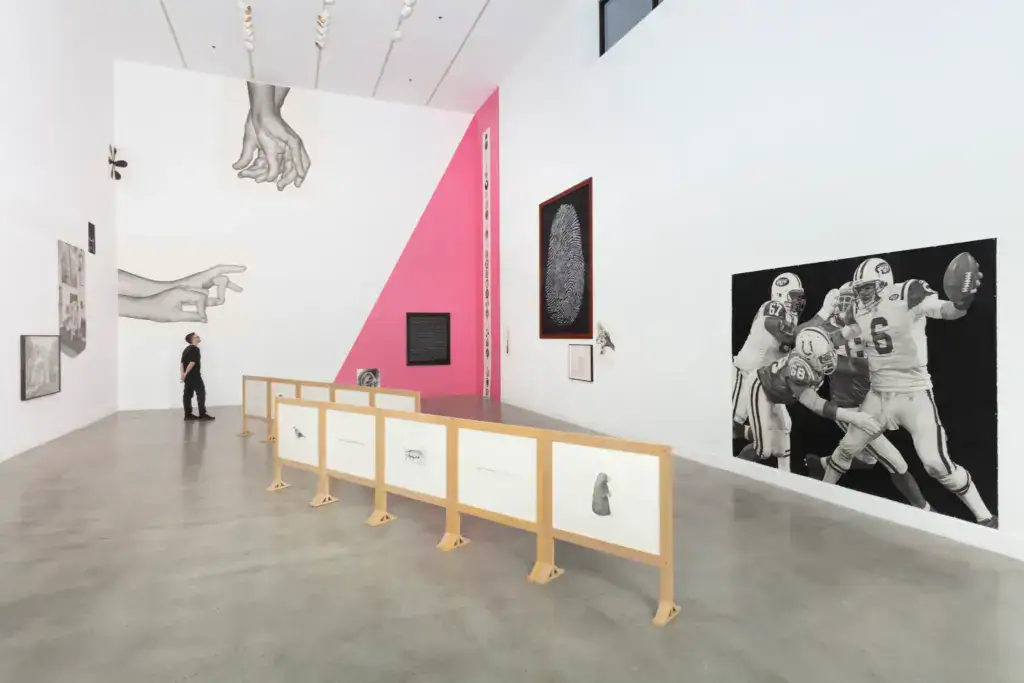
Karl Haendel in Hyperallergic
June 6, 2025
Karl Haendel’s solo show Less Bad at the Weisman Museum of Art at Pepperdine University is featured in Hyperallergic’s “15 Art Shows to See in Los Angeles This Summer.”The exhibition is on view through July 27th.
“Karl Haendel’s mesmerizing, photo-realistic drawings are situated within a conceptual framework that investigates notions o...
Karl Haendel’s solo show Less Bad at the Weisman Museum of Art at Pepperdine University is featured in Hyperallergic’s “15 Art Shows to See in Los Angeles This Summer.”The exhibition is on view through July 27th.
“Karl Haendel’s mesmerizing, photo-realistic drawings are situated within a conceptual framework that investigates notions of masculinity, artistic labor, and the function of images in contemporary society. Organized in collaboration with the Kimball Art Center in Park City, Utah, Less Bad features work from the past two decades that draws on art history, mass media, literature, and the artist’s own life, mixing technical mastery with dry wit. The exhibition layout itself highlights playful juxtapositions, allowing viewers to make their own connections between Haendel’s disparate renderings of image and text.”
By Matt Stromberg – 05 June 2025
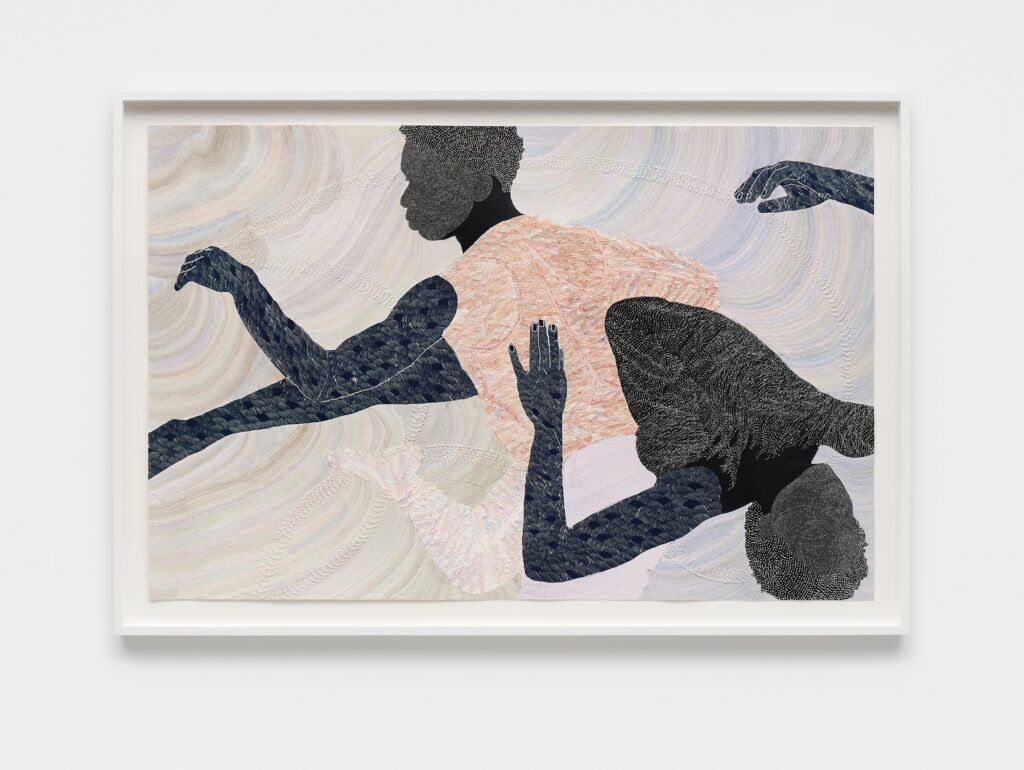
Nate Lewis in Observer
March 6, 2025
Nate Lewis’s exhibition Tuning the Signals is reviewed in The Observer. The show is on view through March 29th.
“As Lewis walked us through the show, he pointed out that his latest body of work embraces a more experimental use of paint and color alongside his signature paper sculpting and carving techniques. Working over printed images...
Nate Lewis’s exhibition Tuning the Signals is reviewed in The Observer. The show is on view through March 29th.
“As Lewis walked us through the show, he pointed out that his latest body of work embraces a more experimental use of paint and color alongside his signature paper sculpting and carving techniques. Working over printed images with meticulous scalpel movements, he lifts edges and disrupts the surface’s regularity, creating an epidermal effect that pulses with vibrancy. By pushing the limits of what is typically expected from works on paper, Lewis reveals the medium’s unexpected painterly and sculptural qualities, transforming its surface into something tactile, almost skin-like—a field of layered textures that invite touch.”
By Elisa Corollo – 06 March 2025
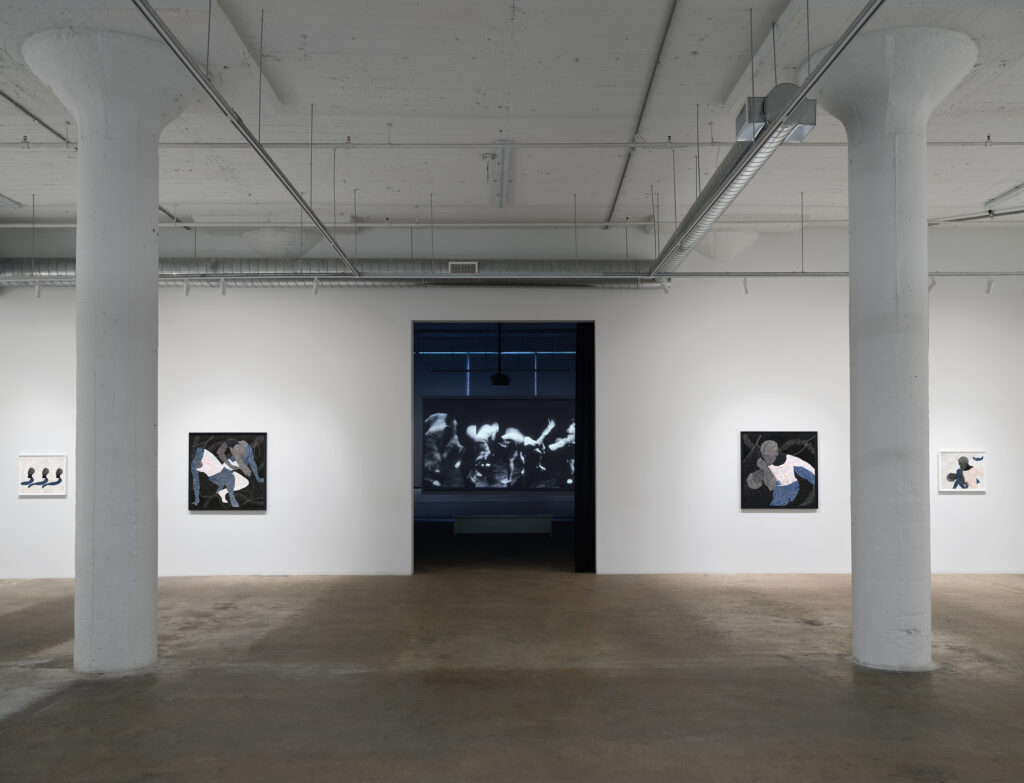
Nate Lewis in Whitewall
February 22, 2025
Nate Lewis is interviewed in Whitewall magazine on the occasion of his exhibition Tuning the Signals currently on view at the gallery.
“On February 8 in Los Angeles, artist Nate Lewis debuted an inaugural solo presentation with Vielmetter Los Angeles, currently on view through March 29. Tuning the Signals beckons visitors on a spellbin...
Nate Lewis is interviewed in Whitewall magazine on the occasion of his exhibition Tuning the Signals currently on view at the gallery.
“On February 8 in Los Angeles, artist Nate Lewis debuted an inaugural solo presentation with Vielmetter Los Angeles, currently on view through March 29. Tuning the Signals beckons visitors on a spellbinding journey through 12 sculpted works on paper and a lyrical video piece of organic and cultural harmonies. Highly distinguished for his signature practice of layering photography, painting, drawing, paper sculpting, and printmaking in tactile and cellular artworks, Lewis draws perceptively from his experience as a critical care nurse. Elements of X-ray imaging and lyrical capoeiristas unite to the melody of Symphony No. 1 Afro-American Symphony in creations pulsing with historical acts of cultural resistance. New video A Clandestine Exchange beguiles alongside the song Any Train We Can Catch by Ben Lamar Gay, inviting viewers into a playful and kinetic universe of miniature figure paper doll capoeiristas.“
By Erica Silverman – 20 February 2025
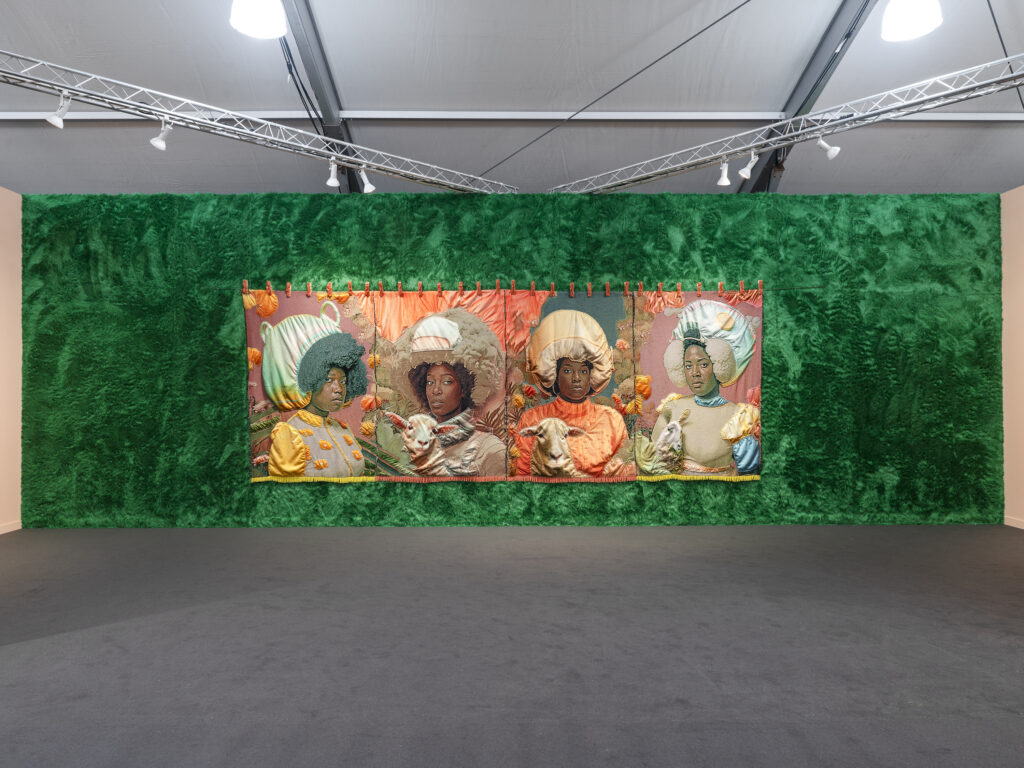
April Bey in The Wall Street Journal
February 21, 2025
April Bey’s solo presentation at Frieze LA mentioned in The Wall Street Journal about creative perseverance.
“It’s a happy problem as a critic to have too many artists you want to praise and too little space in which to do so, but among the many other standouts I could cite are April Bey’s textile works at Vielmetter of citizens of a f...
April Bey’s solo presentation at Frieze LA mentioned in The Wall Street Journal about creative perseverance.
“It’s a happy problem as a critic to have too many artists you want to praise and too little space in which to do so, but among the many other standouts I could cite are April Bey’s textile works at Vielmetter of citizens of a futuristic society that’s intimately tied to nature, which offered utopian visions of what human-ecological bonds could be.”
By Brian P. Kelly – 21 February 2025
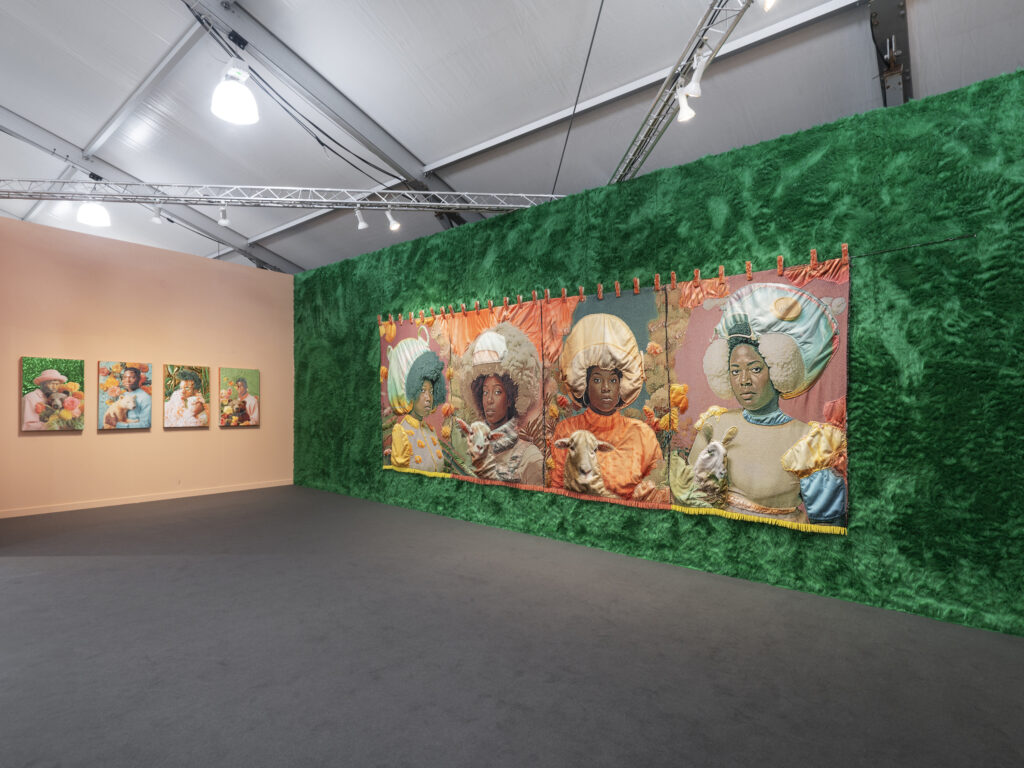
April Bey in Artsy
February 21, 2025
April Bey’s solo presentation at Frieze LA is included in Artsy’s top 10 booths of the fair!
“Draped in a lush green velvet backdrop, Los Angeles–based April Bey’s massive textile work We Will Not Apologize for Being the Universe; Our Own Constellation. Don’t You Know Light Lives in Dark Places Too? (2025) stands as the centerpiece of ...
April Bey’s solo presentation at Frieze LA is included in Artsy’s top 10 booths of the fair!
“Draped in a lush green velvet backdrop, Los Angeles–based April Bey’s massive textile work We Will Not Apologize for Being the Universe; Our Own Constellation. Don’t You Know Light Lives in Dark Places Too? (2025) stands as the centerpiece of the Vielmetter Los Angeles booth…The characters in Bey’s works populate a fictional, optimistic universe first conceived in a conversation between the artist and her father, who used science fiction to explain racial oppression. To create these figures, Bey begins these portraits with photoshoots, after which the images are altered using artificial intelligence and then meticulously translated into tapestries adorned with glitter, beads, and textiles.”
By Maxwell Rabb – 21 February 2025
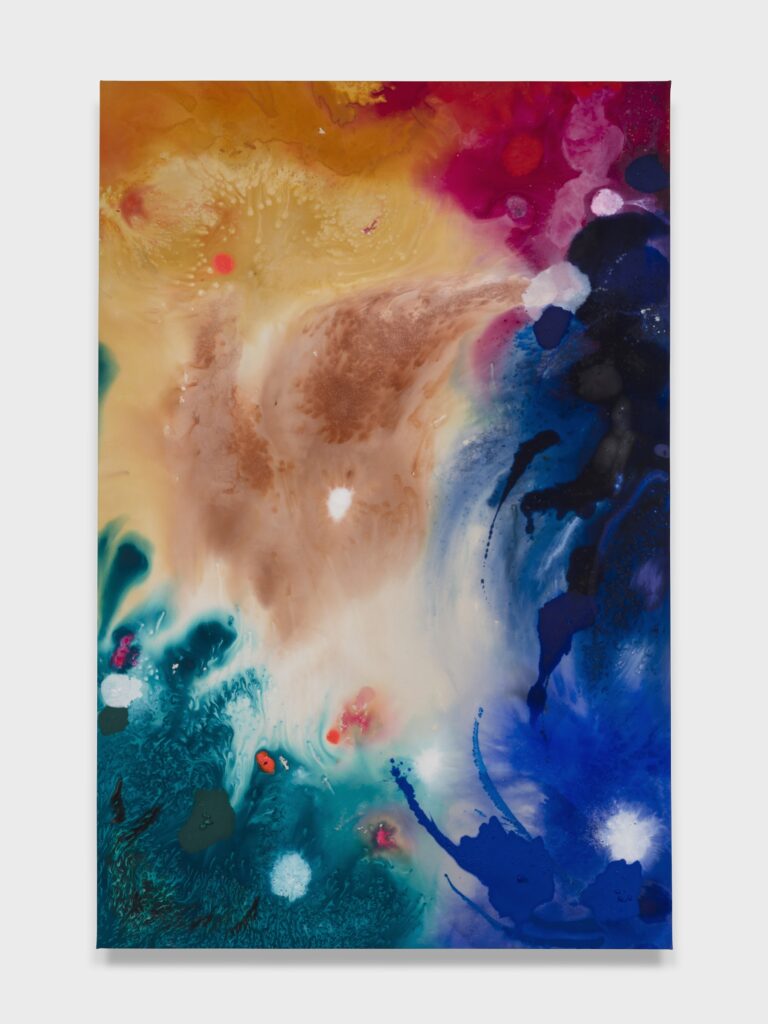
Kim DeJesus in Cultured Magazine
February 18, 2025
Kim DeJesus featured in Cultured Magazine’s “Must See During Frieze Week” round up by Katie Kern.
“Not one to be limited by the brush, much of DeJesus’s work is made through staining, pouring, and blurring. The pieces evoke the vast expanses of outer space, urging viewers to consider their own perception of time, place, and consciousne...
Kim DeJesus featured in Cultured Magazine’s “Must See During Frieze Week” round up by Katie Kern.
“Not one to be limited by the brush, much of DeJesus’s work is made through staining, pouring, and blurring. The pieces evoke the vast expanses of outer space, urging viewers to consider their own perception of time, place, and consciousness.”
By Katie Kern – 17 February 2025
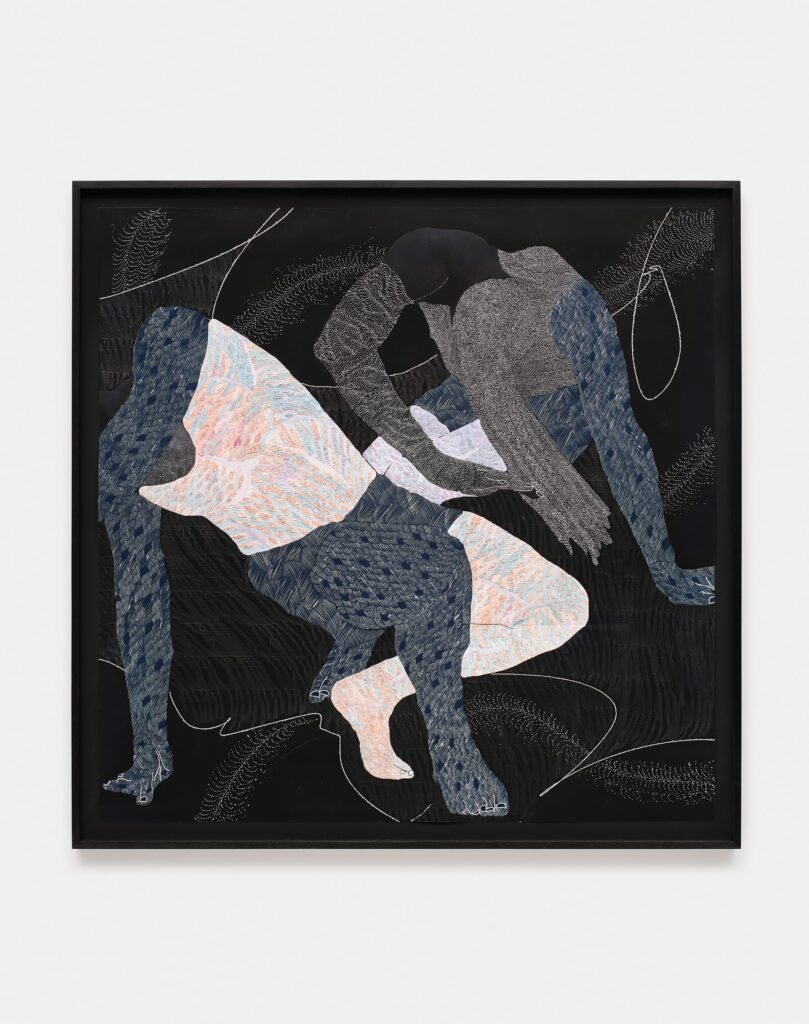
Nate Lewis in Frieze Magazine
February 14, 2025
Nate Lewis featured in Frieze Magazine in celebration of Black History Month.
“William Still Grant’s Symphony No.1 (Afro-American Symphony) (1930) was the first symphony by an African American composer to be performed by a major US orchestra. Grant’s score features as a frottage backdrop to Nate Lewis’s new works on paper for his solo ...
Nate Lewis featured in Frieze Magazine in celebration of Black History Month.
“William Still Grant’s Symphony No.1 (Afro-American Symphony) (1930) was the first symphony by an African American composer to be performed by a major US orchestra. Grant’s score features as a frottage backdrop to Nate Lewis’s new works on paper for his solo show Tuning the Signals at Vielmetter Los Angeles. Figures writhe and intertwine in response to the score, emerging through Lewis’s fusion of photography, drawing, painting, printmaking and paper-sculpting. The rich textures of Lewis’s works recall cellular tissue and topography, inspired by time spent as a critical care nurse and his practice of capoeira, an Afro-Brazilian martial art.”
By Frieze Magazine Staff – 14 February 2025
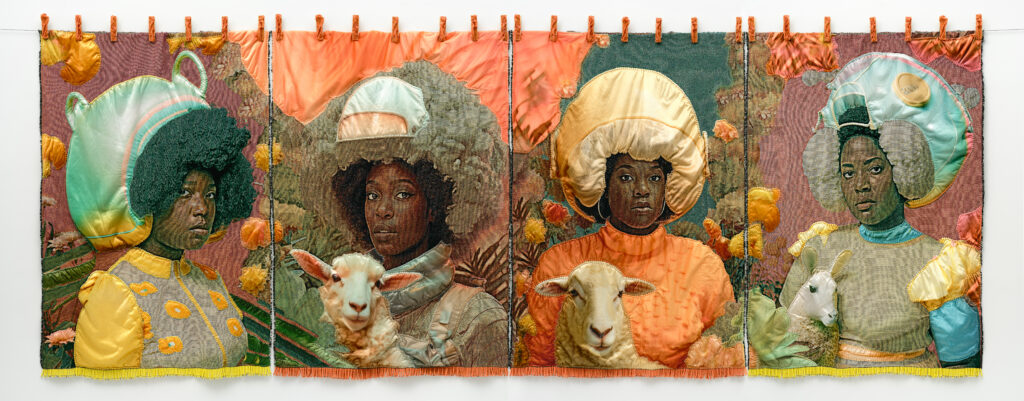
April Bey in Wallpaper*
February 5, 2025
Our Frieze LA presentation featuring new works by artist April Bey named as one of the must see shows in Wallpaper* magazine.
“A staple of the city’s art scene for over twenty years, Vielmetter Los Angeles is staging a solo booth of LA-based, Bahamian-American artist April Bey, whose multidisciplinary practice blends pop culture, socia...
Our Frieze LA presentation featuring new works by artist April Bey named as one of the must see shows in Wallpaper* magazine.
“A staple of the city’s art scene for over twenty years, Vielmetter Los Angeles is staging a solo booth of LA-based, Bahamian-American artist April Bey, whose multidisciplinary practice blends pop culture, social media and Afrofuturism to investigate colonial systems and constructs of race. Her vibrant, mixed-media figurative works on view will include We Will Not Apologize for Being the Universe; Our Own Constellation. Don’t You Know Light Lives in Dark Places Too?, 2025, a stunning portrait of four Black women made with jacquard woven textiles, sherpa blanket, giant clothespins and beads and spanning over 20-feet long.
‘April’s fundamentally joyful vision of our collective future will be a welcome experience for our audience in this difficult and dark time,’ Susanne Vielmetter tells Wallpaper*.”
By Annabel Keenan – 04 February 2025
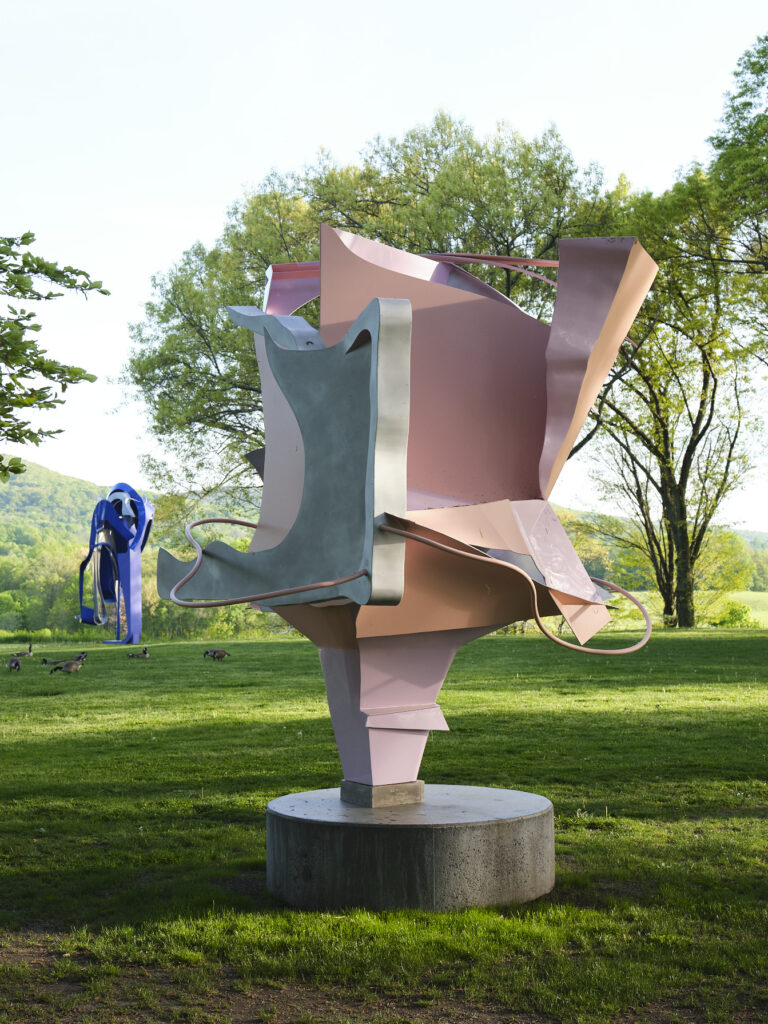
Arlene Shechet in ARTnews
December 18, 2024
Arlene Shechet’s exhibition Girl Group is featured as one of Art News’s defining artworks of 2024!
“Antiseptic steel structures by men of yore dominate the Storm King Art Center’s sprawling sculpture park. Against these similar (and canonical) shapes, Arlene Shechet’s 2024 suite of sculptures Girl Group stands out with its playful orga...
Arlene Shechet’s exhibition Girl Group is featured as one of Art News’s defining artworks of 2024!
“Antiseptic steel structures by men of yore dominate the Storm King Art Center’s sprawling sculpture park. Against these similar (and canonical) shapes, Arlene Shechet’s 2024 suite of sculptures Girl Group stands out with its playful organic shapes and poppy colors (lemon yellow and baby pink). Her forms are considered from every angle. The sculptures are heavy and huge, yet have a striking levity about them—light in color, floating in form.What Girl Group makes visible is how digital fabrication is changing sculpture, unlocking new forms and methods of working. Shechet is not the first to use such tools, but the series’ lasting legacy will be the way she let her software transform everything about her shapes, emphasizing its role rather than trying to hide it: some curves, for instance, are left striated instead of smoothed out. And to top it all off, she created custom benches, inviting you to sit down and soak it all up.”
By ARTnews – 17 December 2024
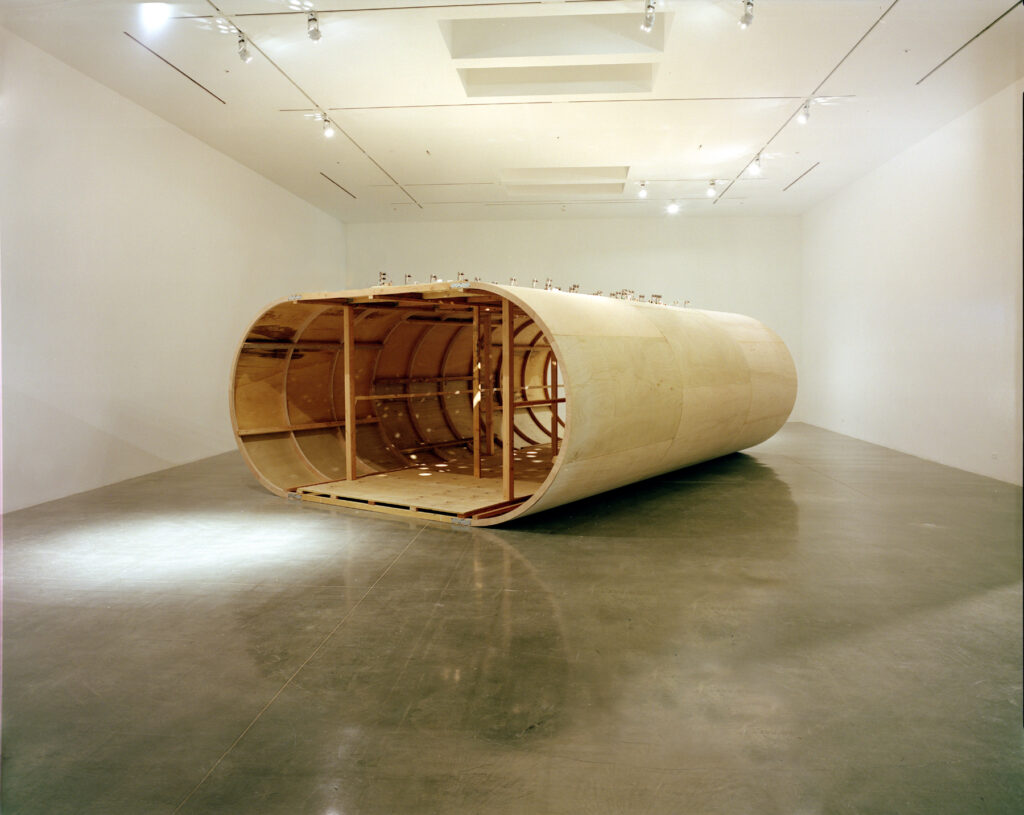
Steve Roden in OTIS College Alumni Magazine
December 17, 2024
Steve Roden’s installation ear(th) (2004) is on view for the first time in 20 years as part of the exhibition Energy Fields: Vibrations of the Pacific, co-presented by Fulcrum Arts and Chapman University.
The show is on view now through January 19, 2025 as part of The Getty’s initiative PST ART: Art & Science Collide.
“Before Roden pas...
Steve Roden’s installation ear(th) (2004) is on view for the first time in 20 years as part of the exhibition Energy Fields: Vibrations of the Pacific, co-presented by Fulcrum Arts and Chapman University.
The show is on view now through January 19, 2025 as part of The Getty’s initiative PST ART: Art & Science Collide.
“Before Roden passed, Novak worked with him to plan the reproduction of ear(th); he says Roden knew they had received funding for the project and was excited at the prospect of people experiencing it once again. The installation of the work became “a gesture and a way to help honor and solidify Steve’s legacy as an important experimental artist,” says Novak. Visitors who know him primarily as a painter can see his sculptural work, and new audiences can gain an appreciation for the way he combined sound and visual art.”
By Eva Recinos – 11 December 2024
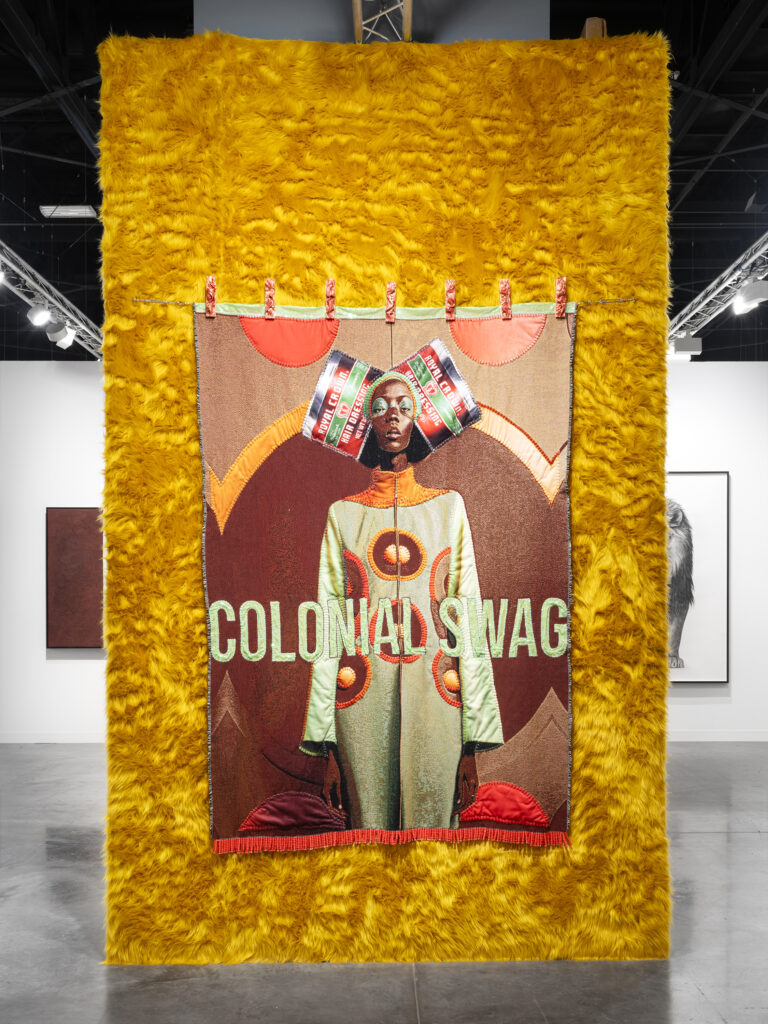
April Bey in The Art Newspaper
December 13, 2024
April Bey’s work is featured in the Art Newspaper with an interview with Dejha Carrington.
“On Atlantica, a fictional home planet conceived by the artist April Bey, Colonial Swag is, as Bey has described it, “a high-fashion luxury brand… that uses fully sustainable, ethically mined colonialism from Earth’s developing countries to creat...
April Bey’s work is featured in the Art Newspaper with an interview with Dejha Carrington.
“On Atlantica, a fictional home planet conceived by the artist April Bey, Colonial Swag is, as Bey has described it, “a high-fashion luxury brand… that uses fully sustainable, ethically mined colonialism from Earth’s developing countries to create beautiful, priceless pieces of fashion”. Her painting Colonial Day Sale: What Are You Gonna Do, If You Like a Woman and Your Mama No Like Am? (2021) is located in the Miami Design District, where it is surrounded by the Earth’s luxury brands. The collaged vinyl print’s billboard format offers a glimpse of Colonial Swag’s branding while playfully yet sharply critiquing the surrounding neighbourhood.””
By Monica Uszerowicz – 06 December 2024
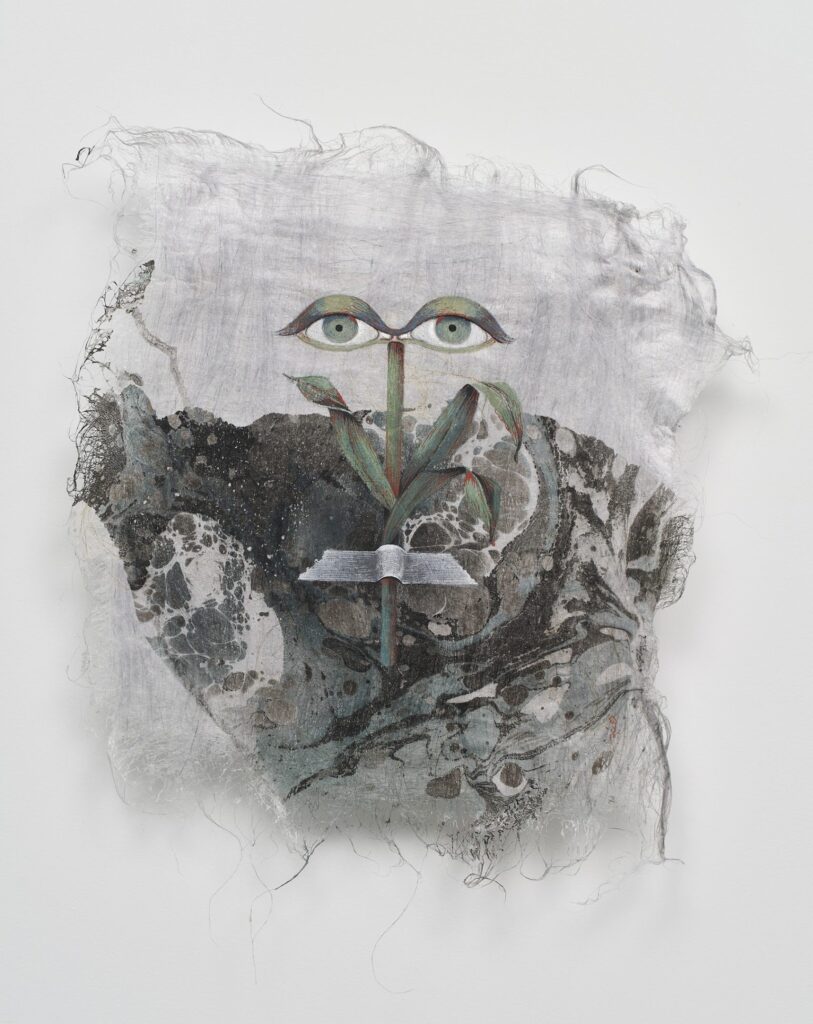
Hayv Kahraman in The Seattle Times
December 6, 2024
Hayv Kahraman’s exhibition Look Me in the Eyes at the Frye Art Museum is reviewed in the Seattle Times.
“One particularly poignant section features a row of tiny watercolors with ghostly plant/body hybrids delicately painted on dark backgrounds. Perhaps it’s the pieces’ contrasting size, compared with the rest of the exhibition, but th...
Hayv Kahraman’s exhibition Look Me in the Eyes at the Frye Art Museum is reviewed in the Seattle Times.
“One particularly poignant section features a row of tiny watercolors with ghostly plant/body hybrids delicately painted on dark backgrounds. Perhaps it’s the pieces’ contrasting size, compared with the rest of the exhibition, but there’s something about the act of drawing close that feels voyeuristic and intimate. It’s like the artist is inviting us in on a secret — we lean in, wanting to learn more.
When asked about her process — does she marble the canvas, then paint her figures, or vice versa — Kahraman says it’s the former, but that inability to tell is the point.
“That’s where I want to go,” she said. “I am constantly thinking about how to dissolve borders, how we think and feel in a more egalitarian way. I love painting with marbling; it decimates borders so there is no near and far, there’s all of it all at once.”
By Rachel Gallaher – 05 December 2024
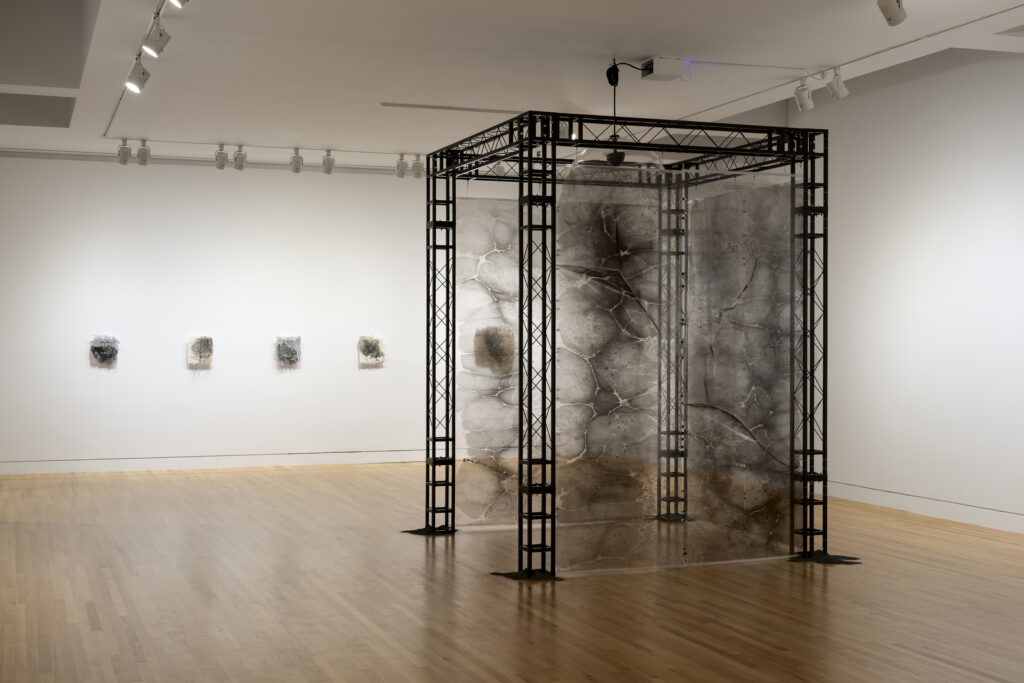
Hayv Kahraman in The Stranger
December 6, 2024
Hayv Kahraman’s exhibition Look Me in the Eyes at the Frye Art Museum is reviewed in The Stranger. The exhibition is on view through February 2, 2025.
“In the center of Hayv Kahraman’s exhibition at the Frye Art Museum, lies a sound booth of sorts. Surrounded on three sides by a taut, semi-opaque synthetic skin, a speaker dangles from ...
Hayv Kahraman’s exhibition Look Me in the Eyes at the Frye Art Museum is reviewed in The Stranger. The exhibition is on view through February 2, 2025.
“In the center of Hayv Kahraman’s exhibition at the Frye Art Museum, lies a sound booth of sorts. Surrounded on three sides by a taut, semi-opaque synthetic skin, a speaker dangles from the ceiling and plays a woman’s measured, assertive voice on a 22-minute loop. It’s from a tape Kahraman’s mother sent to Swedish immigration authorities over a quarter century ago: a rejection of their rejection of her family’s asylum application.”
By Adam Willems – 27 November 2024
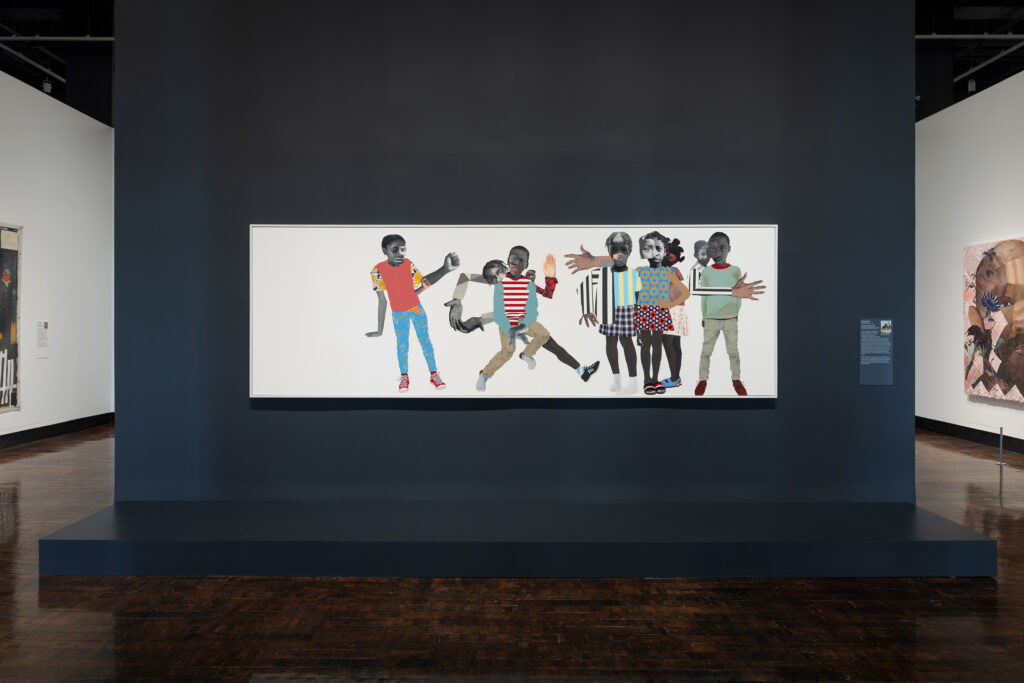
Deborah Roberts, Genevieve Gaignard, and Wangechi Mutu in Artforum
November 5, 2024
The exhibition Multiplicity: Blackness in Contemporary American Collage which recently closed its three-venue tour ending at The Phillips Collection is reviewed by Angelica Aboulhosn in Artforum.
The exhibition, organized by Katie Delmez, included works by Deborah Roberts, Genevieve Gaignard, and Wangechi Mutu.
“Inherent in all the wor...
The exhibition Multiplicity: Blackness in Contemporary American Collage which recently closed its three-venue tour ending at The Phillips Collection is reviewed by Angelica Aboulhosn in Artforum.
The exhibition, organized by Katie Delmez, included works by Deborah Roberts, Genevieve Gaignard, and Wangechi Mutu.
“Inherent in all the works here was a “will to adorn,” to borrow Hurston’s phrase. That need to beautify, however, rarely seemed flippant or empty, as so much of the so-called ornament adumbrated and highlighted moments of great psychic or physical pain. The glimpses of life in this show—some faint, others prismatic—radiated out in every direction, capturing the various joys and hardships of Black existence. The collages of “Multiplicity” pieced together a multifarious picture of life and history that is both grueling and gorgeous in equal measure.”
By Angelica Aboulhosn – 05 November 2024

April Bey in Whitehot Magazine
November 2, 2024
April Bey is interviewed by Jonathan Orozco in Whitehot Magazine on the occasion of her solo exhibition Will You Watch Me Win? at the Union for Contemporary Art in Omaha, NE on view through December 7, 2024.
“For this show, I created advertisements you might see if you were traveling through one of these blue holes. They feature queer ...
April Bey is interviewed by Jonathan Orozco in Whitehot Magazine on the occasion of her solo exhibition Will You Watch Me Win? at the Union for Contemporary Art in Omaha, NE on view through December 7, 2024.
“For this show, I created advertisements you might see if you were traveling through one of these blue holes. They feature queer figures with tentacles for hair, which resemble weave bundles being sold in these beauty supply stores. There’s a lot of humor and insider jokes in the ads too. For example, one of the large tapestries in the show features the word “judgmentorializing,” which is a term I invented back in high school.”
By Jonathan Orozco – 01 November 2024

Samuel Levi Jones in Cultured Magazine
November 1, 2024
Samuel Levi Jones interviewed in Cultured Magazine by Jason Bolden.
“Whenever I take a moment and look out, there are artists like Samuel Levi Jones whose works invite me to shift lenses and dig deeper,” says Jason Bolden. His words speak to the core of Jones’s practice—one that finds clarity in dismantling the seemingly immutable.
Jon...
Samuel Levi Jones interviewed in Cultured Magazine by Jason Bolden.
“Whenever I take a moment and look out, there are artists like Samuel Levi Jones whose works invite me to shift lenses and dig deeper,” says Jason Bolden. His words speak to the core of Jones’s practice—one that finds clarity in dismantling the seemingly immutable.
Jones’s work, particularly in his new exhibition abstraction of truth at Vielmetter Los Angeles, operates in this realm of deconstruction. After dissecting symbols of authority—law books, encyclopedias, and national flags—he reassembles them in configurations that interrogate the colonial narratives they’ve long upheld. The exhibition, on view through Nov. 9, is both a call to action and a confrontation, urging viewers to question the truths they’ve inherited.”
By Jason Bolden – 01 November 2024

Lavaughan Jenkins in Artforum
November 1, 2024
Lavaughan Jenkins’s recent exhibition Love Liberates on view this past summer is reviewed in Artforum by M. Charlene Stevens.
“The exhibition included works created through the application of thick impasto that the artist calls “Love Portals,” 2023–24, after a series of disks that appear above figures in the paintings and which, accord...
Lavaughan Jenkins’s recent exhibition Love Liberates on view this past summer is reviewed in Artforum by M. Charlene Stevens.
“The exhibition included works created through the application of thick impasto that the artist calls “Love Portals,” 2023–24, after a series of disks that appear above figures in the paintings and which, according to the artist, record and preserve memories and moments in time. In a larger-scale “Love Portal” painting, We fit good together, 2023–24, a flat orb made of concentric gradations of blue hues and suggesting a vinyl record hovered above three sculpted “watchers,” their wide-eyed gazes—depicted only as vacuous white ovals set into inky-black faces—fixed on the portal above. The floating object appears to sink into the checkerboard background of three-inch-thick squares built up from paint. These heavy impasto bricks resemble mounds of frosting, waves on a frozen sea, or Claymation frames.”
By M. Charlene Stevens – 01 November 2024
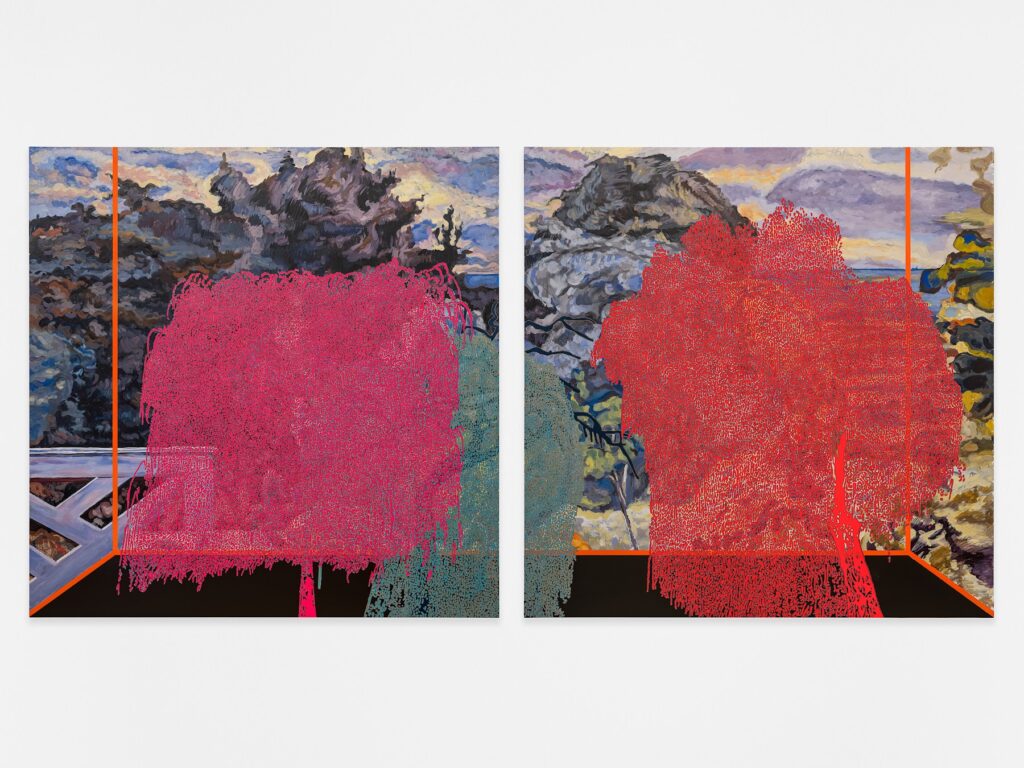
Whitney Bedford in New Times San Luis Obispo
October 31, 2024
Whitney Bedford’s solo exhibition The Window at the San Luis Obispo Museum of Art is reviewed in New Times San Luis Obispo by Camilla Lanham.
“Native California vegetation act as characters looking through windows into historic landscapes, views that look very different today thanks to urbanization and climate change. Bedford’s acrylic...
Whitney Bedford’s solo exhibition The Window at the San Luis Obispo Museum of Art is reviewed in New Times San Luis Obispo by Camilla Lanham.
“Native California vegetation act as characters looking through windows into historic landscapes, views that look very different today thanks to urbanization and climate change. Bedford’s acrylic and oil Veduta series of paintings “bridge the natural, the historic, and the imagined” in The Window, a solo exhibition of her work, which opened in the San Luis Obispo Museum of Art’s (SLOMA) gray wing at the end of October.”
By Camilla Lanham – 31 October 2024

Genevieve Gaignard in The LA Times
October 18, 2024
Genevieve Gaignard’s exhibition Thinking Out Loud is highlighted in the LA Times as “The best of LA arts this weekend”.
“The biracial artist is back at Vielmetter with a third solo exhibition: mixed-media collages, displayed amid clouds strung whimsically overhead and altars situated throughout the space. Gaignard will be in conversati...
Genevieve Gaignard’s exhibition Thinking Out Loud is highlighted in the LA Times as “The best of LA arts this weekend”.
“The biracial artist is back at Vielmetter with a third solo exhibition: mixed-media collages, displayed amid clouds strung whimsically overhead and altars situated throughout the space. Gaignard will be in conversation with writer-producer Mara Brock Akil at the contemporary art gallery on Saturday at 2 p.m. The exhibition is on view through Nov. 9.“
By Ashley Lee – 18 October 2024
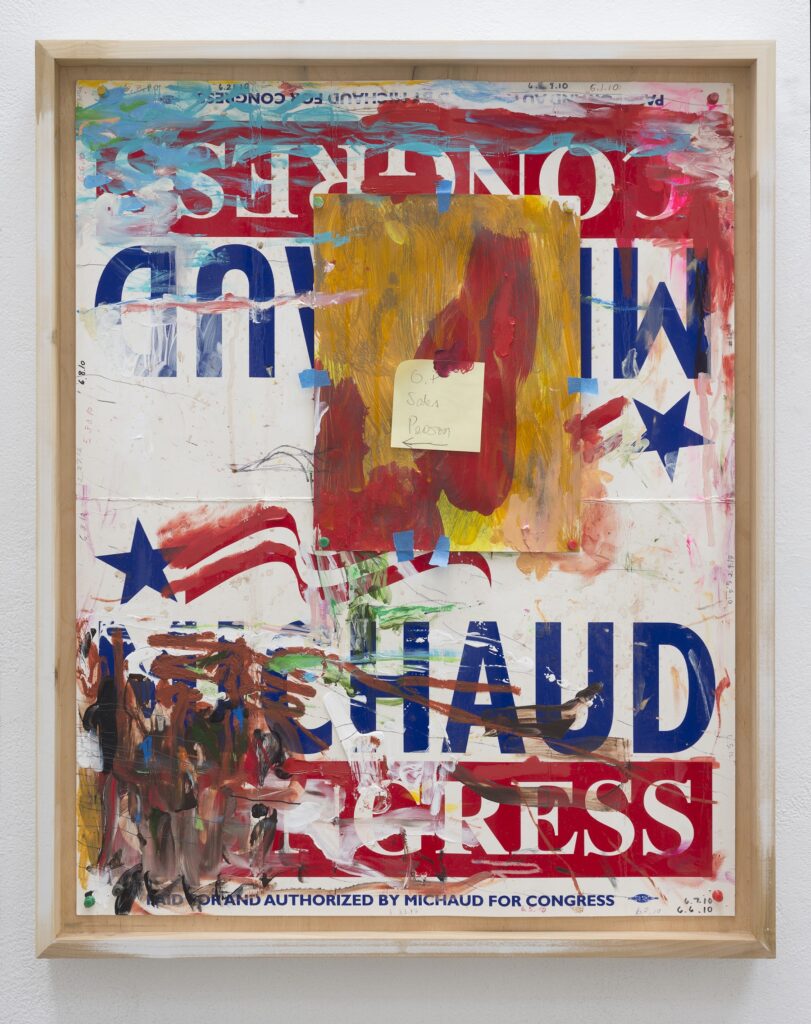
Pope.L in The Brooklyn Rail
October 1, 2024
Lee Ann Norman remembers Pope L. in The Brooklyn Rail.
“Pope.L (June 28, 1955–December 23, 2023) was a multidisciplinary artist and educator who produced work that troubled various assumptions about the human condition. His interest in theater and language became an additional tool for pointing out the absurdity, injustice, and fallibi...
Lee Ann Norman remembers Pope L. in The Brooklyn Rail.
“Pope.L (June 28, 1955–December 23, 2023) was a multidisciplinary artist and educator who produced work that troubled various assumptions about the human condition. His interest in theater and language became an additional tool for pointing out the absurdity, injustice, and fallibility of our systems that define race, gender, or community. Whether through painting, drawing, performance, intervention, video, or installation, his work always provoked surprise, as it reveals something new about the curious ways humans regard and negotiate relationships, and the ways in which we try to make sense of the world. I return to Pope.L’s works not just for their hilarity and ability to arouse discomfort or to wrench my heart in their searing social commentary; they also compel me toward joy.”
By Lee Ann Norman – 01 October 2024

Joseph Olisaemeka Wilson in Juxtapoz Magazine
September 28, 2024
Joseph Olisaemeka Wilson interviewed in Juxtapoz Magazine by Shaquille Heath, Songs About War was on view this past February through March.
“You had a show months ago called Songs About War at Vielmetter in LA that was centered around this military general. Can you tell me about Field General Wali Wallace?
I don’t know much about the g...
Joseph Olisaemeka Wilson interviewed in Juxtapoz Magazine by Shaquille Heath, Songs About War was on view this past February through March.
“You had a show months ago called Songs About War at Vielmetter in LA that was centered around this military general. Can you tell me about Field General Wali Wallace?
I don’t know much about the guy. All I know is that he’s been through the wringer. I’ve never met him or anything. I don’t know about his story. He’s one of those guys that all he knows is war. You know, from the minute he came into this world, he was thrown into the fire. He had some recordings that he made—some field records and some sort of radio thing. During the conflict, I guess that he was sort of broadcasting to an audience and telling them what’s been going on in this war and playing music. I think he’s a bit of a musician, too.”
By Shaquille Heath – 25 September 2024
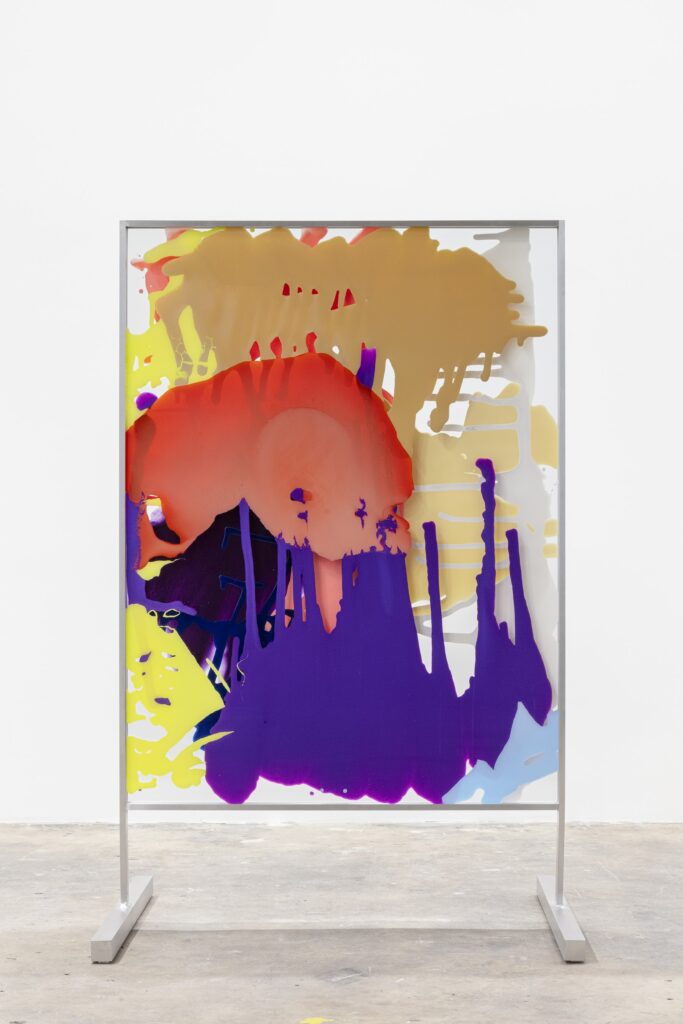
Yunhee Min in Artnet
September 14, 2024
Yunhee Min is featured in “10 Contemporary Women Artists Channeling Helen Frankenthaler’s Abstract Expressionism” on Artsy.
“The influence of Color Field painters like Helen Frankenthaler and Morris Louis is evident in Yunhee Min’s work, where color is a driving force. The Los Angeles–based artist can often take days to find the right ...
Yunhee Min is featured in “10 Contemporary Women Artists Channeling Helen Frankenthaler’s Abstract Expressionism” on Artsy.
“The influence of Color Field painters like Helen Frankenthaler and Morris Louis is evident in Yunhee Min’s work, where color is a driving force. The Los Angeles–based artist can often take days to find the right tones and consistencies to employ in her abstract works.
Once she arrives at the desired colors, Min selects a palette to begin. She then works horizontally, applying paint through techniques such as pouring, rolling, and swirling. Using tools like paint brushes and squeegees, she works on a variety of surfaces, including canvases, glass panels, and fluorescent light tubes. The result is a series of richly textured abstract works that showcase her mastery of color.”
By Salomé Gómez-Upegui – 22 August 2024
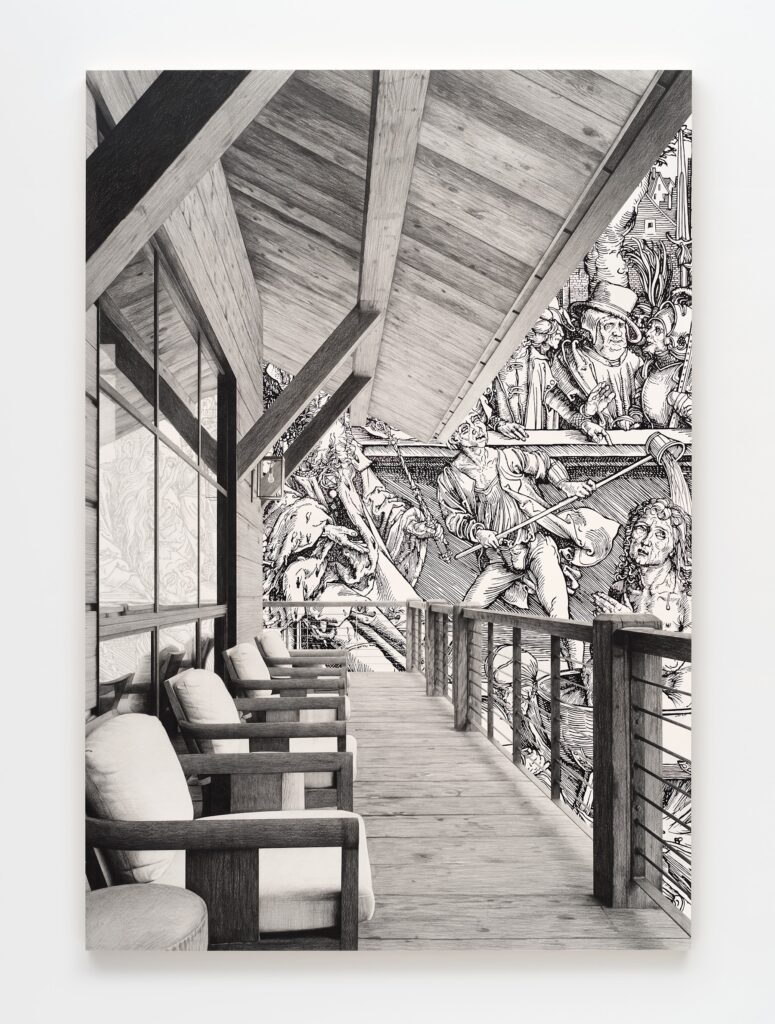
Karl Haendel in The Park Record
August 27, 2024
Karl Haendel’s solo exhibition Less Bad with the Kimball Art Center is featured in The Park Record by Scott Iwasaki.
“The title of the show, which opens with a reception at 6 p.m. on Friday August 30 and will display through Dec. 1, sets a whimsical tone of new and older pencil-and-ink drawings on paper created by Haendel throughout hi...
Karl Haendel’s solo exhibition Less Bad with the Kimball Art Center is featured in The Park Record by Scott Iwasaki.
“The title of the show, which opens with a reception at 6 p.m. on Friday August 30 and will display through Dec. 1, sets a whimsical tone of new and older pencil-and-ink drawings on paper created by Haendel throughout his career.
“It points to how a museum show tries to show the good stuff, a ‘greatest hits,’ but instead of calling them ‘hits,’ you say these are the works that aren’t that bad,” the artist said. “I always like to use some humor in my exhibits because art is sometimes seen as hard to approach, and I think the answer to create art for the broader public is not to dumb it down. You have to provide ways … to bring them in.”
By Scott Iwasaki – 27 August 2024
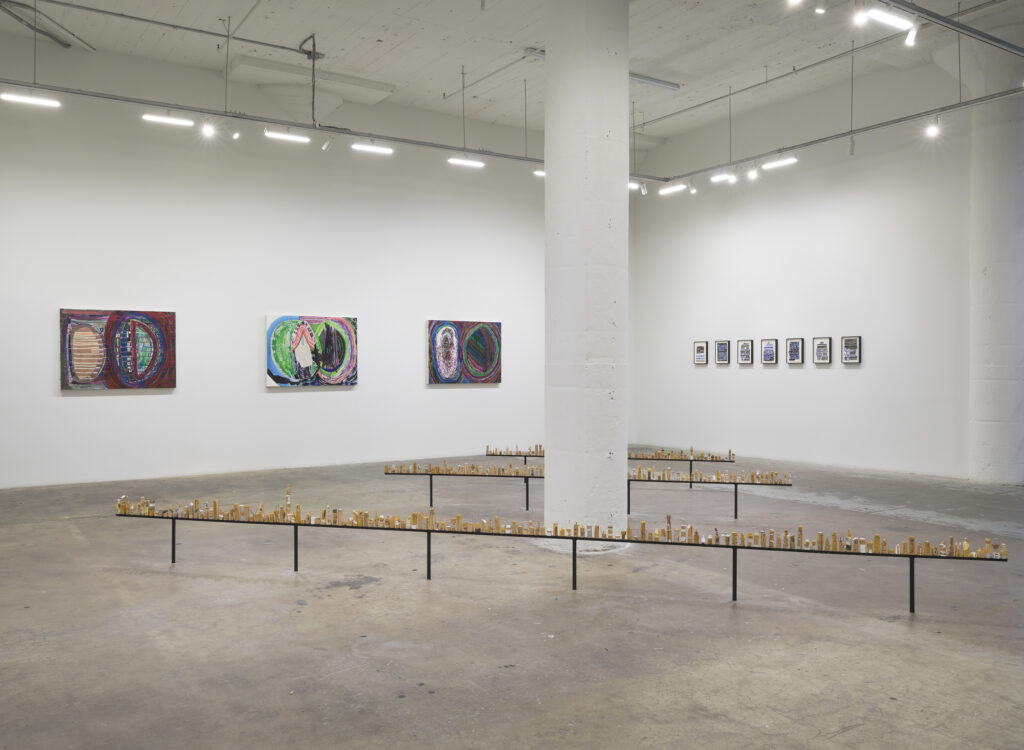
Steve Roden in Hyperallergic
August 2, 2024
Steve Roden’s floating over the silent world is featured in Hyperallergic’s list of “Must See” exhibitions in LA this Summer.
“Steve Roden was a wildly influential and respected artist and musician who passed away from Alzheimer’s disease last September at the age of 59. floating over the silent world pays tribute to his legacy with a ...
Steve Roden’s floating over the silent world is featured in Hyperallergic’s list of “Must See” exhibitions in LA this Summer.
“Steve Roden was a wildly influential and respected artist and musician who passed away from Alzheimer’s disease last September at the age of 59. floating over the silent world pays tribute to his legacy with a selection of lesser-known paintings, drawings, and sculptures created between 1990 and 2019. Roden’s boundless curiosity is evident in his genre-blurring work, which places visual art, sound, science, and language in accessible conceptual frameworks. Notable works in the exhibition include “the surface of the moon” (2001), an early sculptural installation consisting of 490 hand-carved objects inspired by mountains and craters on a vintage lunar map; paintings from his multi-year series the silent world (2002–03); and “from 33 to 45” (2019), which consists of visual representations of the sound of his favorite albums. On Saturday, September 7 at 2 pm, Michael Ned Holte and Alison O’Daniel will host a conversation and series of remembrances of their friend and collaborator.”
By Matt Stromberg – 29 July 2024
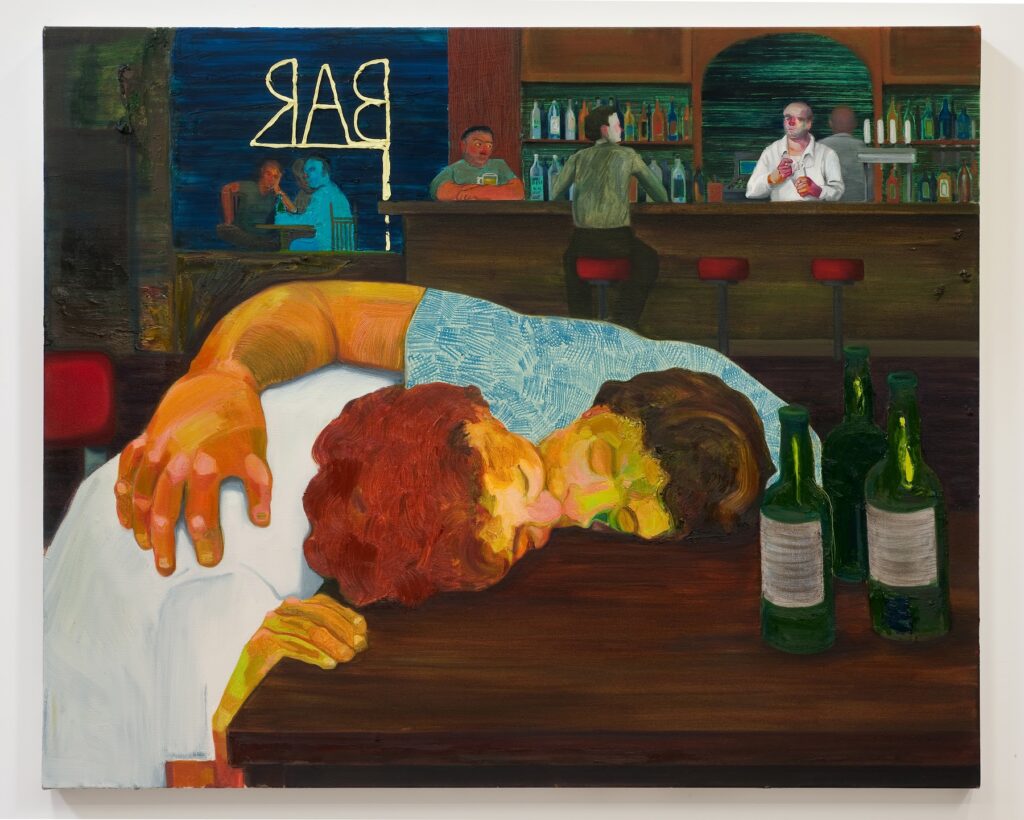
Nicole Eisenman in WhiteHot
July 12, 2024
Nicole Eisenman’s exhibition What Happened currently on view at the MCA Chicago is reviewed in Whitehot Magazine.
“Nicole Eisenman’s What Happened transcends mere exhibition; it stands as a profound testament to the artist’s ability to provoke and inspire introspection. Through her nuanced manipulations of narrative and character, Eise...
Nicole Eisenman’s exhibition What Happened currently on view at the MCA Chicago is reviewed in Whitehot Magazine.
“Nicole Eisenman’s What Happened transcends mere exhibition; it stands as a profound testament to the artist’s ability to provoke and inspire introspection. Through her nuanced manipulations of narrative and character, Eisenman compels viewers to delve beyond her canvases, and extrapolate meaning from the complex human experiences she documents or otherwise constructs — no matter how delusionally radical or unrealistic they may seem.”
By Clare Gemima – 11 July 2024
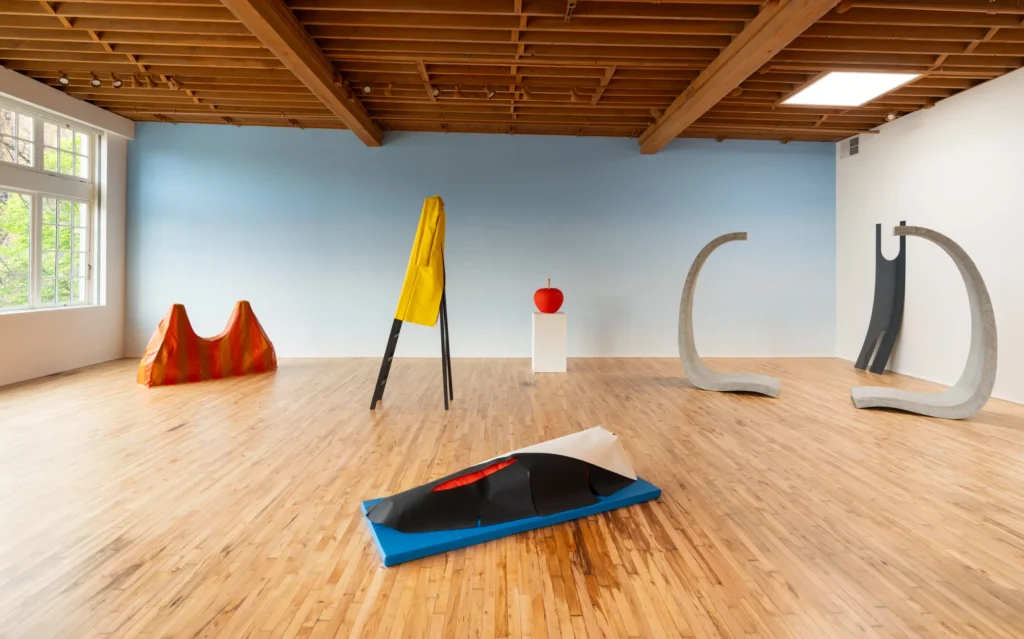
Math Bass in Variable West
July 12, 2024
Math Bass’ solo exhibition Full Body Parentheses at the lumber room in Portland, Oregon is reviewed in Variable West. The exhibition is on view through July 13th.
“From the corner, standing inside the distant hold of curved towers, nearly the whole gallery is in my purview. Looking out it feels as though the sculptures are looking back...
Math Bass’ solo exhibition Full Body Parentheses at the lumber room in Portland, Oregon is reviewed in Variable West. The exhibition is on view through July 13th.
“From the corner, standing inside the distant hold of curved towers, nearly the whole gallery is in my purview. Looking out it feels as though the sculptures are looking back. While today’s treatment of presence limits people with no time for leisure or whose energies are perpetually spent, Bass’ hoards of feeling are a reminder that presence is in the air already acting on you. It’s like the weather or a persistent sound that has become silence. All it takes to feel it is a moment of liberation from being essential.”
By Kaya Noteboom – 10 July 2024
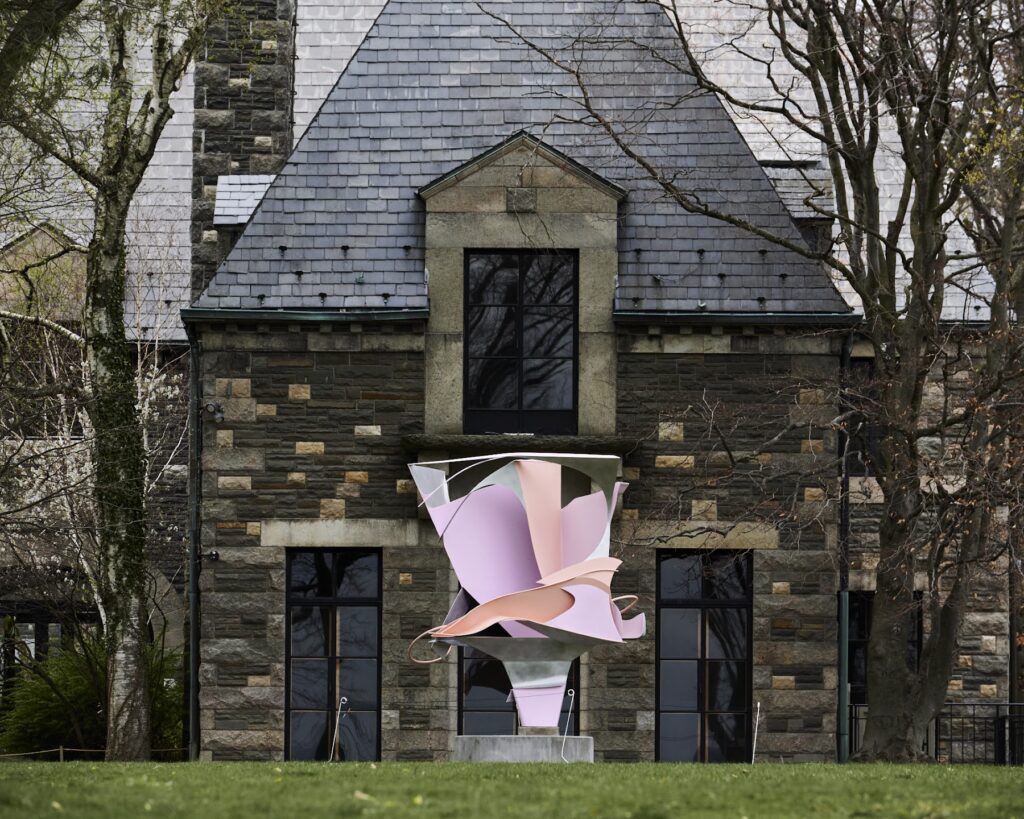
Arlene Shechet in Art in America
June 27, 2024
Arlene Shechet is profiled in Art in America on the occasion of her major exhibition Girl Group on view at Storm King Art Center through November 10, 2024.
“Art in America’s Summer 2024 “Icons” issue features a profile of Arlene Shechet, a sculptor known for her modestly scaled mixed-media works. As Glenn Adamson writes in his story, S...
Arlene Shechet is profiled in Art in America on the occasion of her major exhibition Girl Group on view at Storm King Art Center through November 10, 2024.
“Art in America’s Summer 2024 “Icons” issue features a profile of Arlene Shechet, a sculptor known for her modestly scaled mixed-media works. As Glenn Adamson writes in his story, Shechet’s breathtaking exhibition of monumental sculptures now on view at Storm King Art Center in Upstate New York (through November 10) is “only the latest, if possibly the greatest, evidence of Shechet’s insatiable curiosity.” The show, cheekily titled “Girl Group,” features heavy-metal sculptures made of aluminum and steel redefined by bold colors like emerald green, chartreuse, and orange.”
By Christopher Garcia Valle – 27 June 2024
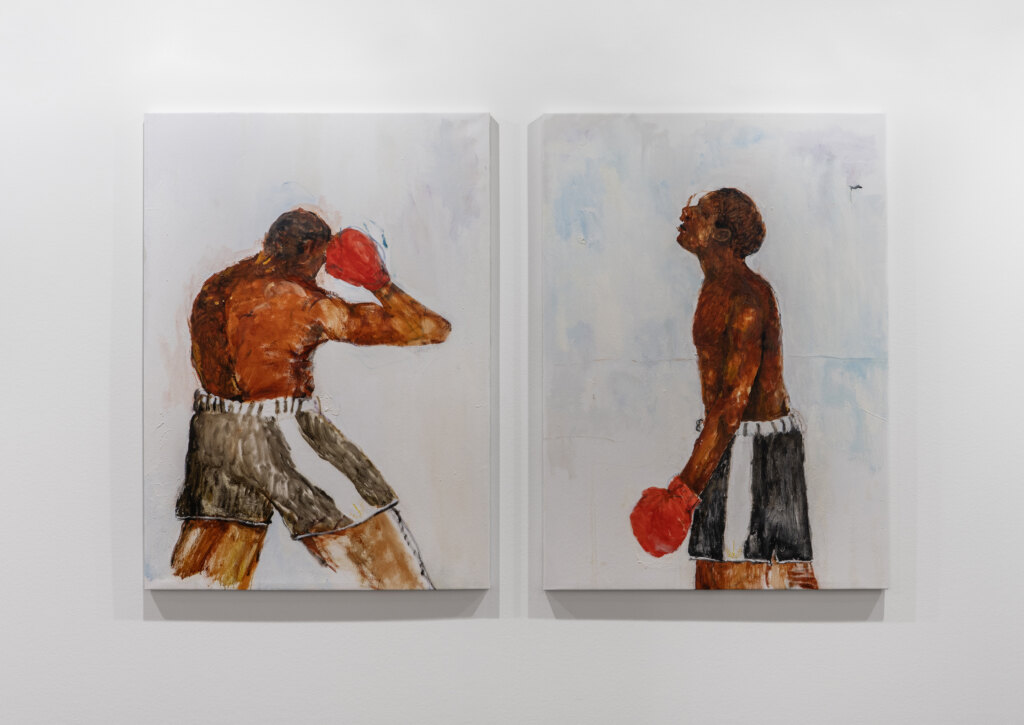
Jared McGriff in The Art Newspaper
June 13, 2024
Jared McGriff featured in The Art Newspaper by José da Silva.
“There is a long history of depicting pugilism in many art forms, from George Bellows’s gestural brushstrokes to Martin Scorsese’s monochrome masterpiece, Raging Bull. Here, the Miami-based artist pairs the sport’s violence with a title seemingly borrowed from a physics book...
Jared McGriff featured in The Art Newspaper by José da Silva.
“There is a long history of depicting pugilism in many art forms, from George Bellows’s gestural brushstrokes to Martin Scorsese’s monochrome masterpiece, Raging Bull. Here, the Miami-based artist pairs the sport’s violence with a title seemingly borrowed from a physics book. The work is a departure for the artist, who is more of a portraitist.”
By José da Silva – 13 June 2024
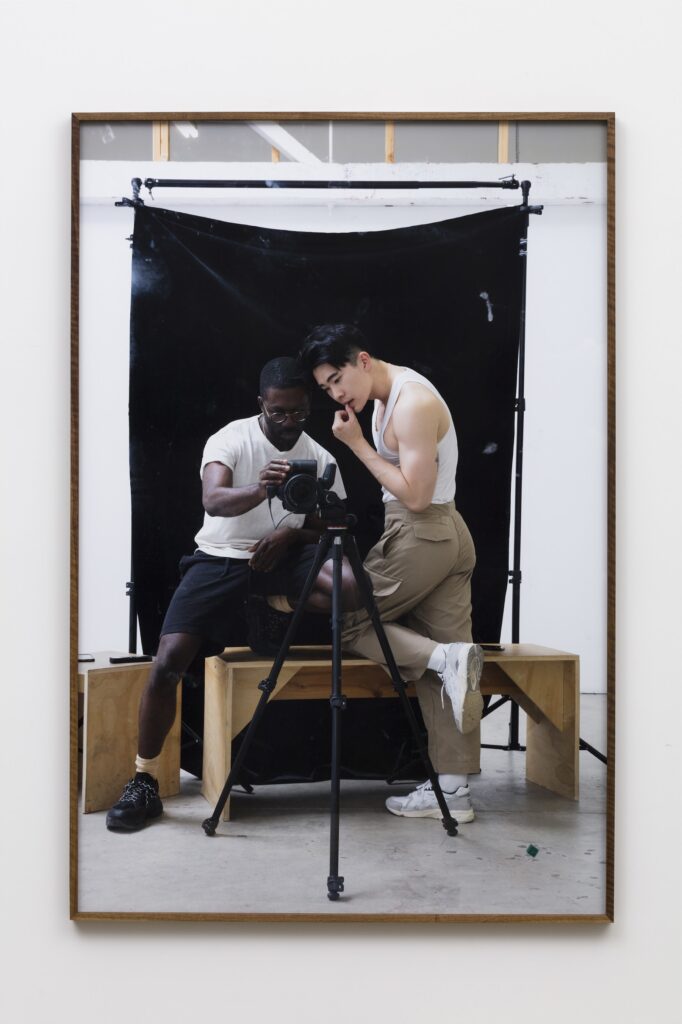
Paul Mpagi Sepuya in Aperture
June 13, 2024
Paul Mpagi Sepuya’s forthcoming publication published by Aperture “Dark Room A-Z” is featured in Dazed’s “8 Photo Books For Your Radar This Summer”.
Since 2016, Paul Mpagi Sepuya’s Dark Room series has unsettled the formal and conceptual foundations of portrait photography, and teased the unstable meaning of “dark room”, a word that re...
Paul Mpagi Sepuya’s forthcoming publication published by Aperture “Dark Room A-Z” is featured in Dazed’s “8 Photo Books For Your Radar This Summer”.
Since 2016, Paul Mpagi Sepuya’s Dark Room series has unsettled the formal and conceptual foundations of portrait photography, and teased the unstable meaning of “dark room”, a word that refers to the site of photographic processes and to spaces of sexual intimacy. Situating “queerness and blackness as starting points for looking at photography from the ground up”, Sepuya takes the studio as his subject. Through his intricate choreographies of bodies, mirrors and photographic equipment, he stages sensory melodramas between artist and subject, reflection and gaze, constantly pushing new visual possibilities.
Dark Room A-Z offers a deep dive into the dense web of methodologies, strategies, and co-creators behind this prolific body of work. It contains both new and previously published critical texts, sources of inspiration, and Sepuya’s own reflections on his thematic preoccupations.
Published by Aperture and available in August.
By Madeleine Pollard – 12 June 2024
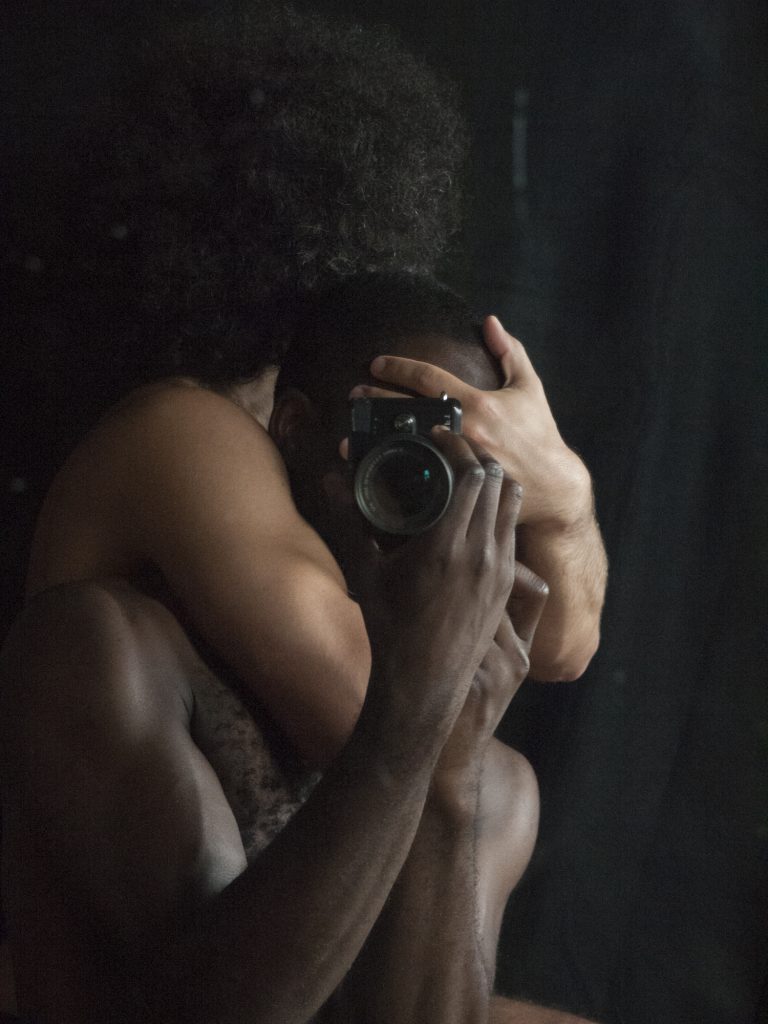
Paul Mpagi Sepuya in The LA Times
June 8, 2024
Paul Mpagi Sepuya is featured in the article “Queer photographers’ most radical act? Turning the lens on themselves” by Eva Recinos in the Los Angeles Times.
“Paul Mpagi Sepuya’s Darkroom Mirror (_2070386), (2017) plays with our sense of closeness and distance, of seeing and not seeing. Sepuya “creates images that hold you,” novelist J...
Paul Mpagi Sepuya is featured in the article “Queer photographers’ most radical act? Turning the lens on themselves” by Eva Recinos in the Los Angeles Times.
“Paul Mpagi Sepuya’s Darkroom Mirror (_2070386), (2017) plays with our sense of closeness and distance, of seeing and not seeing. Sepuya “creates images that hold you,” novelist Justin Torres wrote in The Times’ Image magazine. They “give pause and invite reflection … very much like catching someone else, someone you care for, gazing into the mirror.”
Sepuya uses the mirror to explore the unknown, while nodding to the staged nature of the artist’s studio. His portraits are intentionally, and understandably, queer.
In “the queer subjectivity that I was thinking about,” Sepuya said, “there is not a need to have specific boundaries.” Definitions are “fluid.””
By Eva Recinos – 06 June 2024
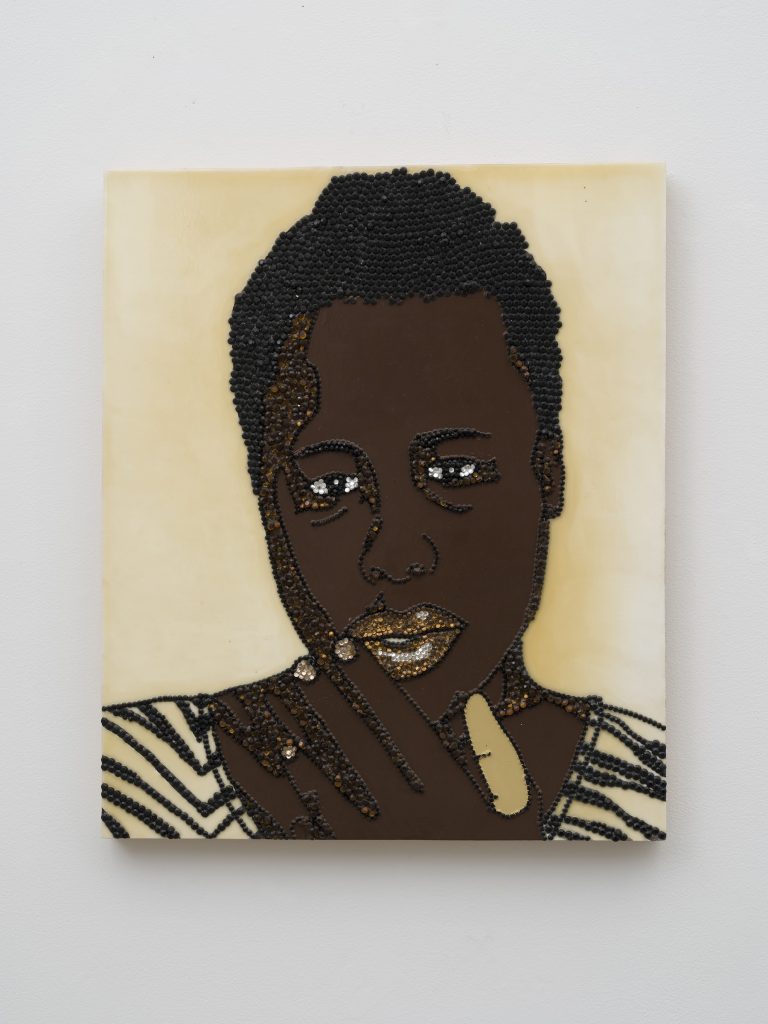
Mickalene Thomas in The LA Times
June 1, 2024
Mickalene Thomas: All About Love on view at The Broad through September 29th is reviewed in the Los Angeles Times by Christopher Knight.
“Then there’s her trademark use of craft-store rhinestones, which is multipurpose. Hair, body contours and facial features are often lined with the glittery paste, sometimes multicolored. The pictures...
Mickalene Thomas: All About Love on view at The Broad through September 29th is reviewed in the Los Angeles Times by Christopher Knight.
“Then there’s her trademark use of craft-store rhinestones, which is multipurpose. Hair, body contours and facial features are often lined with the glittery paste, sometimes multicolored. The pictures’ flatly painted skin and two-dimensional patterning in textiles and wallpaper are set into shimmering visual motion. The paintings become performers, like entertainers on TV or the stage.”
By Christopher Knight – 01 June 2024
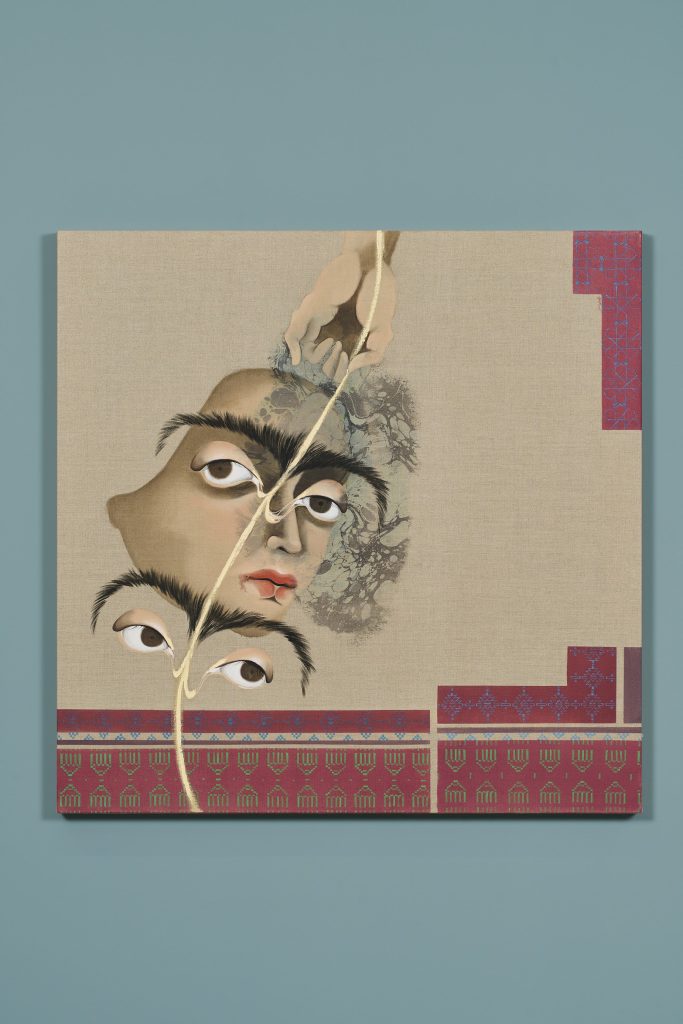
Hayv Kahraman in BOMB Magazine
May 18, 2024
Hayv Kahraman interviewed in BOMB magazine on the occasion of her solo exhibition Look Me in the Eyes at the ICA SF.
“Hayv Kahraman’s figures take on different roles in each body of work. They might be contorted in poses resembling acrobats or torture subjects, or they might be bound by black, intestinal shapes. In her largest solo mus...
Hayv Kahraman interviewed in BOMB magazine on the occasion of her solo exhibition Look Me in the Eyes at the ICA SF.
“Hayv Kahraman’s figures take on different roles in each body of work. They might be contorted in poses resembling acrobats or torture subjects, or they might be bound by black, intestinal shapes. In her largest solo museum exhibition to date, this “army of fierce women,” as she once described them, is entwined with a vegetal motif. Titled Look Me in the Eyes, at the Institute of Contemporary Art San Francisco, the exhibition includes new paintings, sculptures, and an audio work. In some scenes, the women lack irises; in others, bodiless eyes sprout from the ground like saplings.”
By Will Fenstermaker – 18 May 2024
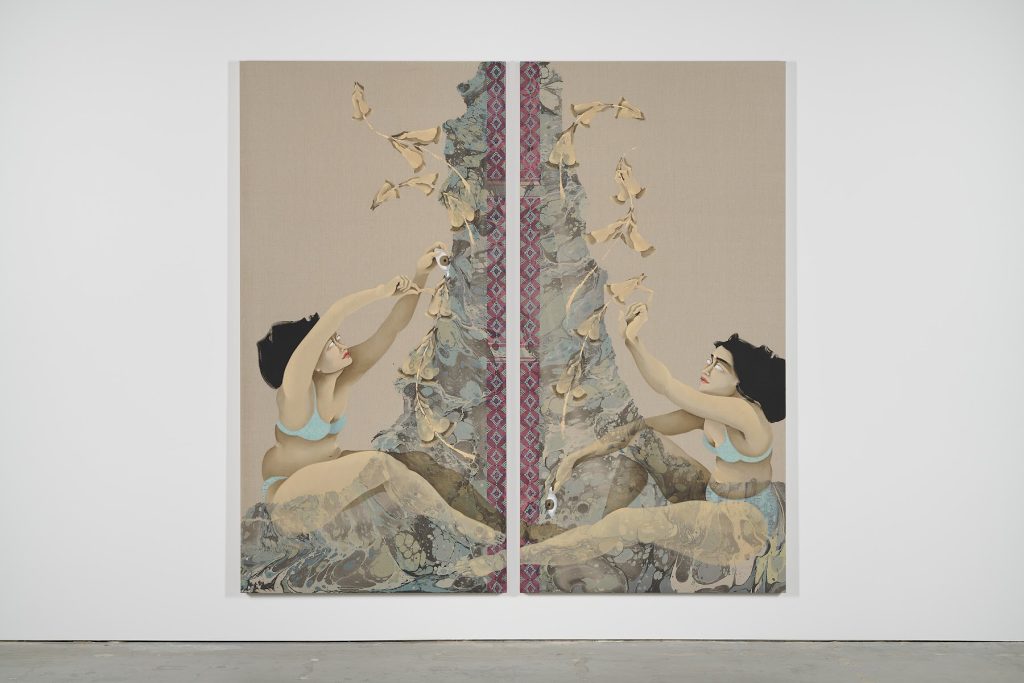
Hayv Kahraman in Art in America
May 16, 2024
Hayv Kahraman interviewed in Art in America by Francesca Anton speaks about her solo exhibition Look Me in the Eyes at the ICA San Francisco.
Featuring all new work, the exhibition continues the powerful visual and conceptual elements that have been tenets of Kahraman’s practice, while also marking a momentous new phase of the artist’s...
Hayv Kahraman interviewed in Art in America by Francesca Anton speaks about her solo exhibition Look Me in the Eyes at the ICA San Francisco.
Featuring all new work, the exhibition continues the powerful visual and conceptual elements that have been tenets of Kahraman’s practice, while also marking a momentous new phase of the artist’s career. Alongside new paintings and never-before-seen large-scale sculptures constructed in layers of marbled brick with painted eyes, Kahraman is introducing her first ever audio installation—a deeply personal work about her family’s refugee experience.
“The figures seem to be not only persistent—there is a kind of anger to them. I was always taught to be an obedient little girl who performed well. Even as an immigrant in school, I had to prove myself worthy and never show anger, never protest. These figures are the complete opposite. They’re channeling resistance.”
By Francesca Aton – 15 May 2024
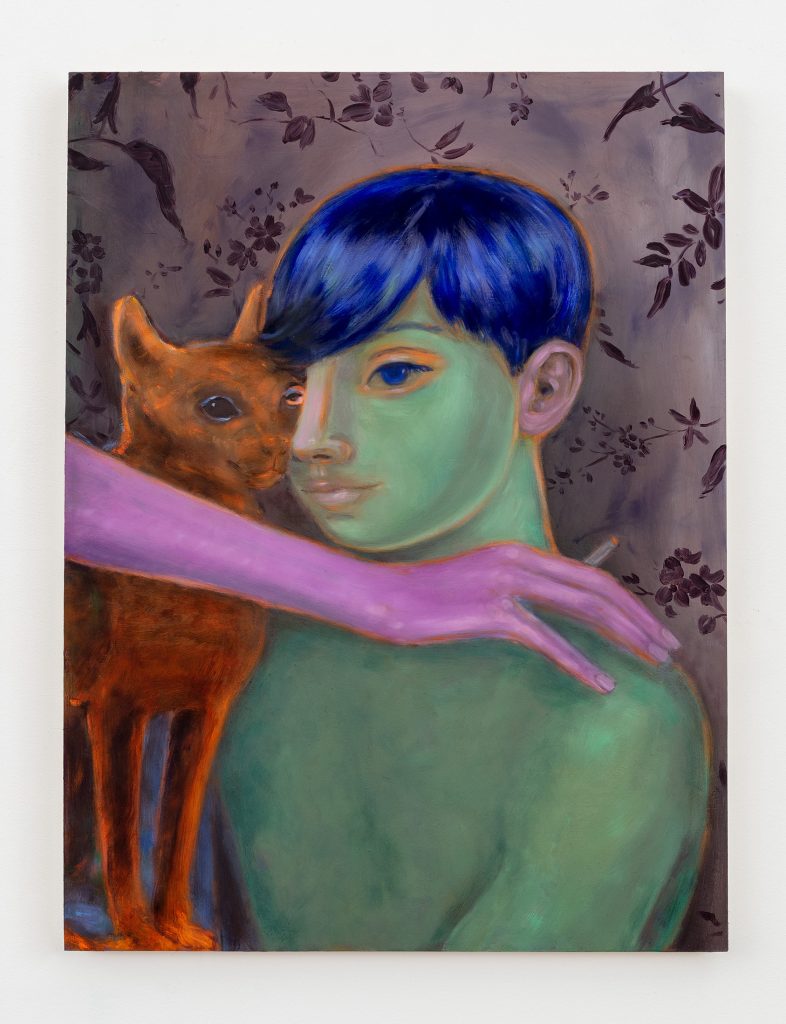
Aly Helyer in Artillery
May 14, 2024
Aly Helyer’s solo exhibition Everything is Borrowed reviewed by Shana Nys Dambrot in Artillery magazine!
“In the arresting painting On Your Side (2024), a person and their cat canoodle in twinned profiles that make it seem like they share an eye—and that’s not even the strangest thing about it. The main figure, shirtless and with glowi...
Aly Helyer’s solo exhibition Everything is Borrowed reviewed by Shana Nys Dambrot in Artillery magazine!
“In the arresting painting On Your Side (2024), a person and their cat canoodle in twinned profiles that make it seem like they share an eye—and that’s not even the strangest thing about it. The main figure, shirtless and with glowing minty-pistachio skin, has glossy, deep indigo hair and a serene countenance anchored by a wide, deep blue, orange-ringed eye in a thousand-yard stare. A long, graceful lavender arm reaches across to touch their shoulder, but whose arm? The cat—bright orange, lanky, and intent—stares off into an indeterminate area of vintage-style wallpaper. While utilizing an art historically conventional format—central figure, important object or companion, schematic but familiar background—in its lyrical, extraterrestrial, hyperchromatic actuality, the work of English painter Aly Helyer is anything but.”
Everything is Borrowed is on view through May 18th.
By Shana Nys Dambrot – 09 May 2024

Nicole Eisenman in Galerie Magazine
May 4, 2024
Nicole Eisenman’s What Happened at the MCA Chicago reviewed in Galerie Magazine by Shelby Black.
“Going deeper into the exhibition, Eisenman’s small and large-scale canvases adorn the museum’s walls, where her trademark whimsical figures are introduced to audiences through environments ranging from bustling pubs to personal bedrooms. A...
Nicole Eisenman’s What Happened at the MCA Chicago reviewed in Galerie Magazine by Shelby Black.
“Going deeper into the exhibition, Eisenman’s small and large-scale canvases adorn the museum’s walls, where her trademark whimsical figures are introduced to audiences through environments ranging from bustling pubs to personal bedrooms. A number of the artist’s paintings depict social settings, where crowds typically gather around one central character washed in vivid color. Despite the rowdy atmosphere, feelings of isolation and loneliness practically seep from the canvases, as seen in artworks such as The Drawing Class (2011) and Beer Garden with AK (2009), but in nearly all of Eisenman’s work, there’s something to pull you back into fantasy.
“When you’re looking at a figure, you can feel a sense of distance, but there’s always something else to laugh at because she doesn’t take it too seriously,” says Collingwood. “So even when someone is staring off and with this really kind of despondent gaze, they’re holding a blackberry in their hand. So it kind of pulls you out of that seriousness of the moment.””
By Shelby Black – 29 April 2024

Arlene Shechet in The New York Times
May 2, 2024
Arlene Shechet’s solo exhibition Girl Group at Storm King Art Center featured in The New York Times by Nancy Hass.
“Shechet intended for Girl Group to nod to Storm King’s midcentury ethos of muscular hand-hammered minimalism set incongruously amid edenic surroundings, but the sculptures also play with the gender assumptions that often ...
Arlene Shechet’s solo exhibition Girl Group at Storm King Art Center featured in The New York Times by Nancy Hass.
“Shechet intended for Girl Group to nod to Storm King’s midcentury ethos of muscular hand-hammered minimalism set incongruously amid edenic surroundings, but the sculptures also play with the gender assumptions that often accompany works of such size and materials. “I wanted to fit in but I also wanted to stand out,” she says. They stand as well as a comment on the collection itself, which is, like public sculpture, dominated by men.”
The exhibition will open May 4th and run through November 10th.
By Nancy Hass – 27 April 2024

Mickalene Thomas in The New York Times
April 26, 2024
Mickalene Thomas and her upcoming solo exhibition Mickalene Thomas: All About Love at The Broad featured in a New York Times article written by Robin Pogrebin. The exhibition opens in Los Angeles on May 25 and will be on view through September 29.
“Well before the current market craze over Black figuration, Thomas was exploring the Bla...
Mickalene Thomas and her upcoming solo exhibition Mickalene Thomas: All About Love at The Broad featured in a New York Times article written by Robin Pogrebin. The exhibition opens in Los Angeles on May 25 and will be on view through September 29.
“Well before the current market craze over Black figuration, Thomas was exploring the Black female figure. “It’s difficult to understand from where we are now how radical her work was when I first showed it,” said the Los Angeles gallerist Susanne Vielmetter, who gave Thomas one of her first solo shows in 2007. “I cannot think of a single artist who at that time was making portraiture of female Black figures from a perspective of female desire.”
“The museum’s show features more than 80 works made over the last 20 years and bills itself as the artist’s “first major international tour.” But Thomas did not want to call it a retrospective or a survey.”
“It seems so finite, so definite — closed and fixed,” she said over a shrimp Caesar salad at the Edition hotel. “I like things open-ended. My career is still young.”
By Robin Pogrebin – 26 April 2024

Hayv Kahraman in The Brooklyn Rail
April 20, 2024
Hayv Kahraman’s exhibition The Foreign in Us at The Moody Center for the Arts is reviewed in the Brooklyn Rail.
“While The Foreign in Us asks audiences to recognize difference, Kharaman does not assign a narrative. There’s repetition and a clear message behind the exhibition’s crown of symbols—steely, contortionist femmes, grenades, ba...
Hayv Kahraman’s exhibition The Foreign in Us at The Moody Center for the Arts is reviewed in the Brooklyn Rail.
“While The Foreign in Us asks audiences to recognize difference, Kharaman does not assign a narrative. There’s repetition and a clear message behind the exhibition’s crown of symbols—steely, contortionist femmes, grenades, bacteria-ridden torshi, antibodies—but Kahraman refrains from feeding her viewers neat ideology. Stunning yet impenetrable, Kahraman’s army of women engages as much with selfhood as with the other; an ode to, rather than a manual for, living with difference.”
By Rosa Boshier Gonzalez – April 2024

Nicole Eisenman in The Washington Post
April 19, 2024
Nicole Eisenman’s What Happened featured in The Washington Post!
“Eisenman, 59, is our most inventive and irreverent — and often times our most startlingly intimate — contemporary painter. Her style is really several styles, across several media — not just painting but also printmaking, collage and sculpture.”
Her paintings and brillia...
Nicole Eisenman’s What Happened featured in The Washington Post!
“Eisenman, 59, is our most inventive and irreverent — and often times our most startlingly intimate — contemporary painter. Her style is really several styles, across several media — not just painting but also printmaking, collage and sculpture.”
Her paintings and brilliant sculptural ensembles are totally alive — sometimes almost maniacally so. But they’re also continually collapsing into a stunned stasis. When they emerge again, it’s into states of bafflement as the artist tentatively gropes after community, which she tenderly, gratefully celebrates.”
By Sebastian Smee – 19 April 2024

Celia Paul in Artnet
March 12, 2024
Celia Paul is interviewed by Dian Parker for Artnet News!
“When she paints, she moves into a hypnotic state and becomes what she is painting. Whether it is her four sisters, a vase of flowers, or the sea, she is at one with it all. She gets inside the work until canvas and subject merge and even she disappears. Perhaps that is why ther...
Celia Paul is interviewed by Dian Parker for Artnet News!
“When she paints, she moves into a hypnotic state and becomes what she is painting. Whether it is her four sisters, a vase of flowers, or the sea, she is at one with it all. She gets inside the work until canvas and subject merge and even she disappears. Perhaps that is why there is no mistaking a Celia Paul painting: the layers of paint, the muted tones, the Payne’s grey of dreams, the portraits with internal faces.” Writes Dian Parker.
“The sea is a symbol of movement and stillness—the water constantly shifting, always in flux, yet contained, controlled. By thinking about water and waves, my inner weather can find a resonance. My flower paintings are almost always about renewal. My favorites are roses and peonies, the infolding, the lushness combined with discreteness, the heavenly scent. I want to convey their exquisite perfume with my paint-marks.” Says Celia Paul.
By Dian Parker – 06 March 2024

Whitney Bedford and Andrea Bowers in Frieze Magazine
February 29, 2024
Whitney Bedford and Andrea Bowers were named in the Association of Professional Art Advisors’ Top 10 Picks from Frieze Los Angeles Viewing Room 2024!
“In Veduta (Vuillard Jardins Publics), Whitney Bedford has taken a classic work of art and melded it into a contemporary work with sensitivity and care. The mood is gentle and serene, jus...
Whitney Bedford and Andrea Bowers were named in the Association of Professional Art Advisors’ Top 10 Picks from Frieze Los Angeles Viewing Room 2024!
“In Veduta (Vuillard Jardins Publics), Whitney Bedford has taken a classic work of art and melded it into a contemporary work with sensitivity and care. The mood is gentle and serene, just as you experience with a Vuillard. I like the use of color—unexpected and even violent—but it meshes easily with the overall work.” Says Clarice Pecori Giraldi.
“This subtle, detailed, pencil and pastel drawing by artist and activist Andrea Bowers, The Dead Silence of Extinction (Moloka’i Creeper, last confirmed sighting 1963, HI, scientific specimen preserved at Auckland Museum’s Natural History Collection), draws from images of extinct bird specimens from the aforementioned museum’s collection to illustrate the precarious nature of our present world. Having just viewed similar poignant drawings in Bowers’ exhibition “Exist, Flourish, Evolve” at MoCa Cleveland, where the artist tackles environmental concerns head on (Bowers grew up on Lake Erie, OH), I could not help but be inspired and hope for a brighter world. The fragile nature of our ecosystem and the impact on wildlife are a continued throughline in Bowers’ work, beckoning us all to take urgent note and care for our planet.” Joanne Cohen writes.
By Frieze Staff – 26 February 2024

Paul Mpagi Sepuya in Frieze Magazine
February 16, 2024
Paul Mpagi Sepuya’s Nottingham Contemporary exhibition Exposure, featured in Frieze Magazine by Reuben Esien.
“A hand peeks from the upper-left corner of a photograph, holding a dusty black backdrop; at its centre sits a camera on a tripod. The arresting Daylight Studio Mirror (0X5A1511) (2021) is one of many works containing the appar...
Paul Mpagi Sepuya’s Nottingham Contemporary exhibition Exposure, featured in Frieze Magazine by Reuben Esien.
“A hand peeks from the upper-left corner of a photograph, holding a dusty black backdrop; at its centre sits a camera on a tripod. The arresting Daylight Studio Mirror (0X5A1511) (2021) is one of many works containing the apparatus of their making in ‘Exposure’, the first European institutional exhibition of Los Angeles-based artist Paul Mpagi Sepuya. The piece is an apt starting point for a show that continuously reveals what is usually unseen in the photographic process: the detritus and scenery of the artist’s studio, his image-making factory.
Sepuya’s practice seemingly inserts itself into a lineage of self-reflective portraiture – including Diego Velazquez’s painting Las Meninas (1656) and Jeff Wall’s photograph Picture for Women (1979) – in which the artists and their instruments appear within the scenes they’re creating. Sepuya’s works seem to subvert Susan Sontag’s description in On Photography (1977) of the dominance of the shooter over their subject and the camera as ‘a predatory weapon’. By turning the camera upon itself (and upon himself), to lay bare the workings of the studio, he appears as much at risk as his sitters from what Sontag described as the ‘camera/gun’.”
By Reuben Esien – 15 February 2024

Andrea Bowers in Inside Climate News
February 8, 2024
Andrea Bowers’s solo exhibition at MoCA Cleveland is featured in Inside Climate News by Katie Surma.
“Exist, Flourish and Evolve provokes visitors to confront philosophical arguments behind the rights of nature movement: principally, that nature is not a thing, or merely human property as conventional law treats it. Rather, Earth and i...
Andrea Bowers’s solo exhibition at MoCA Cleveland is featured in Inside Climate News by Katie Surma.
“Exist, Flourish and Evolve provokes visitors to confront philosophical arguments behind the rights of nature movement: principally, that nature is not a thing, or merely human property as conventional law treats it. Rather, Earth and its ecosystems are complex living communities to which humans belong. Modern science confirms this fact and legal systems ought to catch up to that reality, advocates argue.
The exhibition takes place across two locations. The first, a giant red, green and blue neon sculpture installed outside Cleveland’s lakefront Great Lakes Science Center and the Rock and Roll Hall of Fame declares: “Lake Erie Has the Right to Exist, Flourish, & Naturally Evolve.”
The second, at MoCa, holds Bowers’ drawings, additional neon light installations, a documentary film and activists’ posters and campaign paraphernalia, including a sign boldly asking the question: “If Corporations Have Rights, Shouldn’t Mother Nature?”
By Katie Surma – 04 February 2024

Yunhee Min and Tam Van Tran in The Brooklyn Rail
February 7, 2024
Yunhee Min and Tam Van Tran featured in The Brooklyn Rail.
“I like to think of visual abstraction as an invitation. An invitation for a chance experience and as a resistance to meaning or interpretation. I approach abstraction as a relational dynamic, hence always involved in some sense of movement and time. In studio, making abstracti...
Yunhee Min and Tam Van Tran featured in The Brooklyn Rail.
“I like to think of visual abstraction as an invitation. An invitation for a chance experience and as a resistance to meaning or interpretation. I approach abstraction as a relational dynamic, hence always involved in some sense of movement and time. In studio, making abstraction is anything but abstract. This making involves physical and bodily entanglement with materials and processes that evolve over time.” – Yunhee Min
“While my current practice has figurative elements, I am never far from the belief that abstraction is inseparable from selflessness and the sensation of groundlessness.” – Tam Van Tran
The Brooklyn Rail – July 2022

Celia Paul in The Observer
February 6, 2024
Celia Paul Life Painting is reviewed in The Observer by Dian Parker.
“The self-portraits in the show are interwoven with seascapes, water paintings, and flowers, all of which were done from memory. “The sea paintings are almost like passages of music, suggesting the passing of time,” Paul said. “The flowers stand for renewal. There are...
Celia Paul Life Painting is reviewed in The Observer by Dian Parker.
“The self-portraits in the show are interwoven with seascapes, water paintings, and flowers, all of which were done from memory. “The sea paintings are almost like passages of music, suggesting the passing of time,” Paul said. “The flowers stand for renewal. There are also two paintings of buildings in the exhibition, both 20 by 20 inches. My Father’s House is the house where my father died in 1983 when I was 23. At his death, my father was the Bishop of Bradford. After my father’s death, my mother and my four sisters had to leave the house (it went with the job). I have depicted the young apple trees in the garden in front of the house. They represent my mother, my sisters and me.”
By Dian Parker – 01 February 2024

Hayv Kahraman in Vogue
February 1, 2024
Hayv Kahraman’s exhibition Look Me in the Eyes at the ICA SF is featured in Vogue.
“The women are agents of rebellion, standing their ground amid swirling marbled seas. They seem hungry, even angry, desirous of what’s theirs for the taking. Call them women on the verge of getting what they want. In the evocative Love Me Love Me Not (al...
Hayv Kahraman’s exhibition Look Me in the Eyes at the ICA SF is featured in Vogue.
“The women are agents of rebellion, standing their ground amid swirling marbled seas. They seem hungry, even angry, desirous of what’s theirs for the taking. Call them women on the verge of getting what they want. In the evocative Love Me Love Me Not (all works are from 2023), three women hover around a flower-like object, plucking off eyeballs as if they were petals. The central figure slurps one into her mouth, a faint trickle of paint running down her chin. In Eyeris, a riveting, stormy scene, one figure appears ready to pop a loose eyeball into her own socket, like a contact.”
By Grace Edquist – 29 January 2024

Pope.L in Ocula
January 25, 2024
Pope.L and his exhibition Hospital at the South London Gallery featured in Ocula by Stephanie Bailey.
“As a Black man in America, Pope.L said he could never experience race as simply personal—a reality that differed from the experience of white people he knew. ‘They don’t see it as a larger political context that you have people who ar...
Pope.L and his exhibition Hospital at the South London Gallery featured in Ocula by Stephanie Bailey.
“As a Black man in America, Pope.L said he could never experience race as simply personal—a reality that differed from the experience of white people he knew. ‘They don’t see it as a larger political context that you have people who are empowered and people who are not,’ he told The Guardian in 2021.
All of which relates to how Pope.L dealt with race and class throughout his practice. ‘We are born into whiteness,’ he told performance artist Martha Wilson in 1996. ‘On the surface, it seems wholly to construct us, and the degree to which we may counter-construct sometimes seems very limited. But, I believe we can be very imaginative with limitations.'”
By Stephanie Bailey – 25 January 2024

Pope.L in the Financial Times
January 19, 2024
“William Pope.L was born in Newark, New Jersey, in 1955 and spent much of his early career between that area and New York City, attending Montclair State and Rutgers University and participating in the Whitney Museum Independent Study Program. With a background in theatre, he was most widely known for his durational, public performance...
“William Pope.L was born in Newark, New Jersey, in 1955 and spent much of his early career between that area and New York City, attending Montclair State and Rutgers University and participating in the Whitney Museum Independent Study Program. With a background in theatre, he was most widely known for his durational, public performance-art interventions, including several “crawls”, but his broader practice spanned photography, painting, drawing, installation, found-object assemblage and video.
I interviewed the artist William Pope.L in October before he passed away on December 23, and our conversation delved into his visionary practice, discussing conceptual and physical nuance as well as his current exhibition. Sitting in his studio at the University of Chicago, where he was a professor, I quickly realized that my questions would not be met with direct answers. He responded with open-ended, circuitous thoughts — similar to the ambiguous atmosphere that reverberates throughout his body of work, and in his new show at South London Gallery.
As we continued talking, it became evident that Pope.L was not interested in “showing” his work but in creating an atmosphere for the visitor to negotiate and orient themselves. “It’s really fascinating what people do, and of course it has to do with what you put in the room and where you put it . . . I try to set up a mystery or mysteries for them.””
By Geravis Marsh – 5 January 2024